The Library of Consciousness
of Consciousness
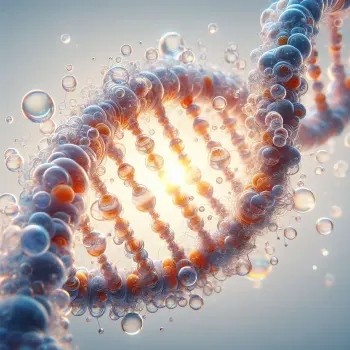
There has been a tremendous upheaval in our understanding of what constitutes our universe and, to a certain extent, our place as embodied beings within it.

Evolution is the process by which populations of organisms change over generations. It occurs through changes in heritable traits of individuals - that is, characteristics that can be passed on from parent to offspring. Over time, these changes accumulate in a population and can lead to the emergence of new species. Evolution is driven by natural selection, whereby individuals with favorable traits that allow them to better adapt to their environment tend to survive and reproduce at higher rates than those with less favorable traits.
There is an enormous amount of evidence supporting the theory of evolution. Fossil records show that species change over long periods of time and that new species arise while others go extinct. We see evidence of evolution happening today as bacteria evolve resistance to antibiotics and insects adapt to pesticides. Evolutionary biology helps explain similarities we see across all life on Earth, showing us how humans and chimpanzees share a relatively recent common ancestor, for example. Evolution continues shaping the diversity of life to this present day. Ongoing research sheds light on key mechanisms like genetic drift, gene flow between populations, and developmental processes, enriching our understanding of this central theory in biology.

A Calendar for the Goddess
(Ecology of Souls)
Beginning with a comparison of reason and logic to intuition, Terence works his way towards exploring the idea of a purposeful goal in the universe which evolution is progressing towards, and humanity's role in this journey. Next, in a nod to the solstice which occurred at the time of the lecture, he plays with the idea of a precessional calendar and argues that it would remind us of the one constant in life, which is flux. Q&A topics include future social myths, morphogenesis, globalization, and psychedelic encounters with the dead.

A Clarification
Reflections on Two Converse Forms of Spirit
Teilhard de Chardin identifies two distinct spiritual paths: unity through “relaxation” (Eastern pantheism) where individual egos dissolve into a common foundation, and unity through “tension” (Western mysticism) where individuals become more themselves while converging toward a universal center. He argues that cosmic evolution favors the latter path, where true union differentiates rather than fuses, and calls for a new Western mysticism that combines personalizing love with cosmic totalization.

A Dialogue on Metasystem Transition
Valentin Turchin explores the theory of metasystem transitions through a conversational approach, examining how new layers of control emerge when individual systems combine into a larger, integrated system. These transitions, Turchin argues, are the key moments in evolution—like stepping stones in both biological and cultural development. By viewing evolution as a series of these transformative quanta, he reflects on past evolutionary leaps and speculates on what they could reveal about the future path of universal evolution.

A Great Event Foreshadowed
The Planetization of Mankind
Teilhard explores the rise of the masses and the socialization of humanity. He predicts a future Earth where human consciousness evolves to its peak, achieving a maximum of complexity and unity through a process of “planetization,” and argues that collective unity is not a threat but a path to personalization and humanization. As we head towards an interconnected world, he challenges us to embrace a sense of evolution and celebrate our shared destiny.

A Major Problem for Anthropology
Teilhard envisions humanity not as evolution’s finale, but as its awakening. As our minds and societies knit into a single global consciousness—the noösphere—evolution becomes self-aware, guiding itself through thought and collaboration. In this new phase, life chooses its own becoming and reaches out toward the ultra-human.

A Masterclass from the Pioneer of Artificial Intelligence
Jürgen Schmidhuber shares his insights on the evolution and future of AI. He discusses the development of self-improving AI systems, the concept of artificial curiosity, and the potential for machines to achieve creativity akin to humans. Schmidhuber also explores the implications of advanced AI on society, emphasizing the importance of aligning AI goals with human values to ensure beneficial outcomes. He envisions a future where AI contributes positively to various fields, including science, art, and technology.

A Mental Threshold Across Our Path
From Cosmos to Cosmogenesis
Teilhard unveils a universe not static but alive—cosmogenesis, a great unfolding where matter rises toward spirit, complexity begets consciousness, and humanity discovers itself as evolution aware of itself. In this vision, evil is byproduct, individuality deepens in unity, and God becomes the animating center: love driving the cosmos toward its destined convergence.

A Note on Progress
A cosmic battle rages between those who proclaim “We are moving!” and the immobilists who insist “Nothing changes.” Pierre Teilhard de Chardin passionately argues that the universe progresses through mankind’s collective evolution of consciousness. For him, Christianity’s future lies in recognizing this biological genesis unfolding—the cosmos physically realizing its psychic fulfillment through humanity striving to form one united Body of Christ.

A Phenomenon of Counter-Evolution in Human Biology
or the Existential Fear
Teilhard explores the “existential fear” that grips modern humans as we confront the vastness of the universe and our seeming insignificance within it. He believes this fear stems from our growing awareness of cosmic immensity, our isolation, and the threat of depersonalization. However, he proposes a radical shift in perspective: by viewing the universe as convergent rather than chaotic, we can transform our terror into hope. This “convergent universe” is one that’s moving towards greater complexity and consciousness, ultimately leading to a unifying center that gives our existence profound meaning and purpose.

A Symbiotic View of Life
We Have Never Been Individuals
For animals, as well as plants, there have never been individuals. This new paradigm for biology asks new questions and seeks new relationships among the different living entities on Earth. We are all lichens.

A Weekend with Terence McKenna
“Healing the inner elf through trance, dance, and diet”—the session for true McKenna enthusiasts: twelve hours with the bard himself, in which he touches upon practically all of his trademark topics.
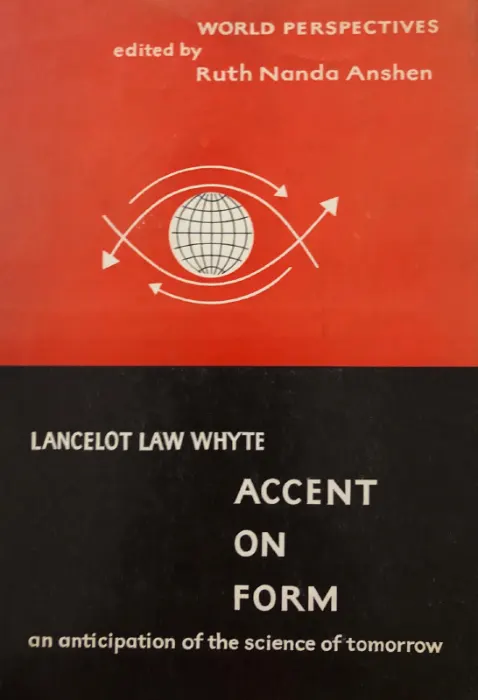
Accent on Form
According to Whyte, the next major advance in science will consist in the use of formal principles, meaning concerned with spatial form, as contrasted with individual constituent parts. This theme is developed in a crescendo from atoms to the creative power of the human intellect with disarming eloquence and elegance, with frequent taunts agsint the neglect of formal and formative principles in present-day science.

Adventures of Ideas
A mind-bending odyssey through the realms of human thought and civilization, Whitehead’s Adventures of Ideas dissects the evolution of ideas, from ancient Greece to modern times, unveiling the intricate tapestry of philosophical concepts that shape our world. He unravels the interplay between science, philosophy, and culture, challenging readers to embark on an intellectual adventure like no other.

Alchemical Youth on the Edge of the World
Can magic mushrooms save the world? Terence McKenna makes the case that today's global youth culture is reviving ancient shamanic techniques to dissolve ego boundaries and empower imagination. Tracing this impulse back to prehistoric mushroom use, McKenna sees history fast approaching a transcendental tipping point. To end the modern era's disequilibrium, he argues we must reconnect with the mystical power of psychedelic plants. McKenna paints a mind-bending vision of how neo-shamanic youth, guided by plant teachers, can lift humanity into a new golden age of ecological harmony and psychic unity.

Alien Love
Terence explores “alien love” and humanity’s evolving relationship with the Other. He posits that psychedelic experiences, particularly those induced by psilocybin mushrooms, may be a form of extraterrestrial contact, and argues that as we venture into space and deepen our understanding of consciousness, we are collectively yearning for connection with something beyond ourselves. This cosmic eros could reshape our cultural and spiritual landscape, potentially leading to a transformative “marriage” with the alien Other that propels humanity into a new phase of evolution and understanding.

Appreciating Imagination
Join Terence McKenna in this weekend workshop as he takes us on an imaginative journey into the depths of human creativity. He explores psychedelics, virtual worlds, and shamanic states of consciousness, saying how an embrace of our imagination allows us to envision and manifest alternate realities beyond cultural conditioning. By cultivating our creative faculties with mathematical reasoning, intuition, and immersion in nature, he guides us toward transcending ideological limits into an enlightened future of compassion. Ultimately, breaking boundaries through the power of imagination will inspire us to reach new heights of understanding and connectivity.
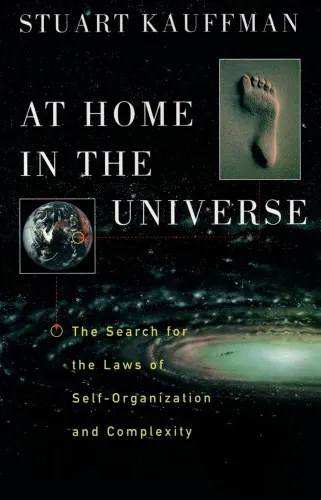
At Home in the Universe
The Search for the Laws of Self-Organization and Complexity
Stuart Kauffman’s At Home in the Universe unveils a scientific revolution centered on spontaneous order in complex systems. Kauffman argues that complexity itself triggers self-organization, revealing life as a natural outcome rather than a chance event. From cell development to cultural evolution, he explores how this principle shapes diverse phenomena. Praised as a visionary by Stephen Jay Gould and Philip Anderson, Kauffman’s work extends Darwin’s theory and offers profound insights into the essence of life.

At the Interface
Technology and Mysticism
What happens when a mystic and a futurist debate humanity’s fate? Alan Watts and Arthur C. Clarke tackle our future from two unique perspectives. Clarke champions technological solutions, from synthetic food to space exploration, while Watts argues for a spiritual evolution—a change in consciousness and our relationship with nature to solve our most pressing problems.
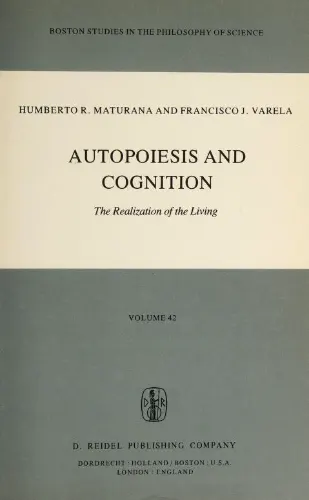
Autopoiesis and Cognition
The Realization of the Living
What makes a living system a living system? What kind of biological phenomenon is the phenomenon of cognition? These two questions have been frequently considered, but, in this volume, the authors consider them as concrete biological questions. Their analysis is bold and provocative, for the authors have constructed a systematic theoretical biology which attempts to define living systems not as objects of observation and description, nor even as interacting systems, but as self-contained unities whose only reference is to themselves. the consequence of their investigations and of their living systems as self-making, self-referring autonomous unities, is that they discovered that the two questions have a common answer: living systems are cognitive systems, and living as a process is a process of cognition. The result of their investigations is a completely new perspective of biological (human) phenomena. During the investigations, it was found that a complete linguistic description pertaining to the "organization of the living" was lacking and, in fact, was hampering the reporting of results. Hence, the authors have coined the word "autopoiesis" to replace the expression "circular organization." Autopoiesis conveys, by itself, the central feature of the organization of the living, which is autonomy.

Beyond Success
Ram Dass investigates the effect of success upon our individual consciousnesses and how one may see beyond mere egocentric opportunism.

Build Your Own Damn Wagon
(Laws and Freedom, Habits and Novelty)
"Do not watch, do not consume," implores Terence McKenna, inviting us on a thought-provoking journey to reclaim our humanness. By building our own conceptual wagons, rather than riding ready-made vehicles of meaning, we can travel along unique paths of critical thinking. Once within our own virtual worlds, the wonder of our distinctive minds will be open for discovery.

Your Consciousness is the Consciousness of all Humanity
Calcutta 1982, Part 1
Listen carefully: humanity teeters on the brink. Krishnaji says our technological prowess soars, yet our minds remain shackled by ancient conditioning. We cling to illusory individuality, creating conflict through our mental images of others. But we are not separate—we share a common consciousness. A profound inner revolution is imperative. By transforming ourselves, we transform the world. The stakes are immense—nuclear annihilation looms. Only through radical self-awareness and harmonious relationships can we forge a new path. The future hangs in the balance. Act now.

Can Biology, Taken to its Extreme Limit, Enable us to Emerge into the Transcendent?
Teilhard de Chardin argues that biological evolution relies on a “zest for life” or survival instinct. If humans perceive the universe as closed with no transcendent escape from total death, this zest would vanish, halting evolution. Thus, evolution can only continue if seen as irreversible and transcendent, ultimately leading to God.

Centrology
An Essay in a Dialectic of Union
Teilhard proposes a guiding hidden rule present in the universe, leading everything from simplicity to complexity and consciousness. He suggests that as cosmic particles evolve, they become more complex and conscious, ultimately converging toward a unifying Omega point. This vision offers a fresh perspective on the universe, blending science and philosophy to reveal a grand, interconnected cosmic journey.
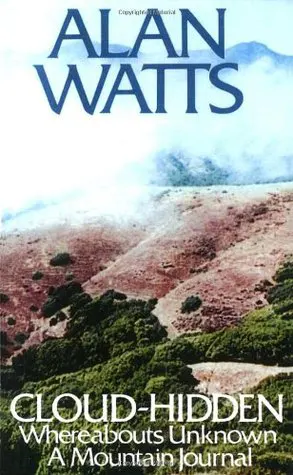
Cloud-Hidden, Whereabouts Unknown
A Mountain Journal
Over the course of nineteen essays, Alan Watts ruminates on the philosophy of nature, ecology, aesthetics, religion, and metaphysics. Assembled in the form of a mountain journal, written during a retreat in the foothills of Mount Tamalpais in California, Cloud-Hidden, Whereabouts Unknown is Watts’ meditation on the art of feeling out and following the watercourse way of nature, known in Chinese as the Tao. Embracing a form of contemplative meditation that allows us to stop analyzing our experiences and start living into them, the book explores themes such as the natural world, established religion, race relations, karma and reincarnation, astrology and tantric yoga, the nature of ecstasy, and much more.
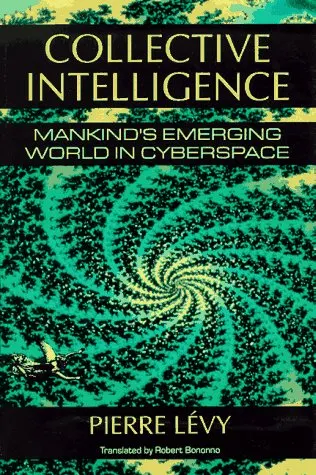
Collective Intelligence
Mankind's Emerging World in Cyberspace
The number of travelers along the information superhighway is increasing at a rate of ten percent a month. How will this communications revolution affect our culture and society? Though awed by their potential, we’ve feared computers as agents of the further alienation of modern man: they take away our jobs, minimize direct human contact, even shake our faith in the unique power of the human brain. Pierre Lévy believes, however, that rather than creating a society where machines rule man, the technology of cyberspace will have a humanizing influence on us, and foster the emergence of a “collective intelligence”—a meeting of minds on the Internet—that will validate the contributions of the individual.

Collective Memory, Group Minds, and the Extended Mind Thesis
While memory is conceptualized predominantly as an individual capacity in the cognitive and biological sciences, the social sciences have most commonly construed memory as a collective phenomenon. Collective memory has been put to diverse uses, ranging from accounts of nationalism in history and political science to views of ritualization and commemoration in anthropology and sociology. These appeals to collective memory share the idea that memory ‘‘goes beyond the individual’’ but often run together quite different claims in spelling out that idea. This paper reviews a sampling of recent work on collective memory in the light of emerging externalist views within the cognitive sciences, and through some reflection on broader traditions of thought in the biological and social sciences that have appealed to the idea that groups have minds. The paper concludes with some thoughts about the relationship between these kinds of cognitive metaphors in the social sciences and our notion of agency.

Conceptions of a Global Brain
an Historical Review
Imagine a giant, intelligent brain made of humanity and its computers—the Global Brain. This idea blends views of society as a living organism, a universal encyclopedia, and an emerging higher consciousness. Global networks like the Internet not only share information but also learn and adapt together. By combining insights from evolution and cybernetics, we can overcome conflicts and build a collective intelligence that makes solving world problems more efficient and creative.

Conscious Evolution
Our Next Stage
Barbara explored the ideas of Pierre Teilhard de Chardin, and the possibilty of humanity gradually giving birth to a new planetary-scale consciousness, which she called Homo universalis.

Conscious Technology
A Candidate World View
Jerome Glenn explores the evolving relationship between humans and technology, proposing a future where the two merge into what he calls a “Conscious Technology” civilization. Glenn argues that as technology advances, it not only augments human capabilities but also starts to take on characteristics traditionally associated with consciousness. This convergence blurs the line between human and machine, suggesting that future technological systems could become extensions of human consciousness itself. Glenn discusses various indicators of this trend, such as the rapid development of artificial intelligence, cybernetics, and biotechnology, which are progressively integrating with human life. He also explores the potential policy implications of this worldview, suggesting that it could become a new criterion for evaluating future technologies and guiding their development. His work implies that understanding and shaping this merger could be crucial for the future of humanity.
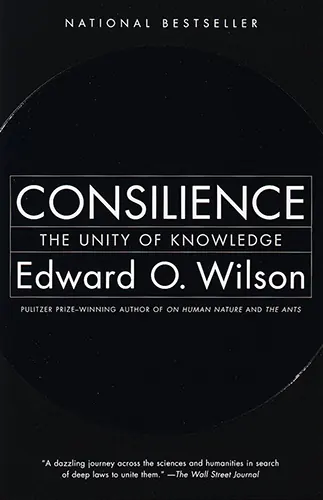
Consilience
The Unity of Knowledge
In Consilience (a word that originally meant “jumping together”), Edward O. Wilson renews the Enlightenment's search for a unified theory of knowledge in disciplines that range from physics to biology, the social sciences and the humanities. Using the natural sciences as his model, Wilson forges dramatic links between fields. He explores the chemistry of the mind and the genetic bases of culture. He postulates the biological principles underlying works of art from cave-drawings to Lolita. Presenting the latest findings in prose of wonderful clarity and oratorical eloquence, and synthesizing it into a dazzling whole, Consilience is science in the path-clearing traditions of Newton, Einstein, and Richard Feynman.

Conversations on the Edge of Magic
Terence’s first workshop at Starwood Festival XIV, where he brings a unique perspective to being in the world that assumes an impending transformation of the human world involving everyone. With humor and in depth we will examine human attitudes toward the Other, time and its mysteries, the nature of language, and the techniques of ecstasy that have developed in non-Western societies to navigate to and from invisible worlds. We will discuss making reasonable choices about spiritual development and techniques. Terence explains that what he calls the “Archaic Revival” is the process of reawakening awareness of traditional attitudes toward nature, including plants and our relationship to them. The Archaic Revival spells the eventual breakup of the pattern male dominance and hierarchy bassed on animal organization, something that cannot be changed overnight by a sudden shift in collective awareness. This is a think-along experience for those who have taken a few moments to chill out from the dance of life.
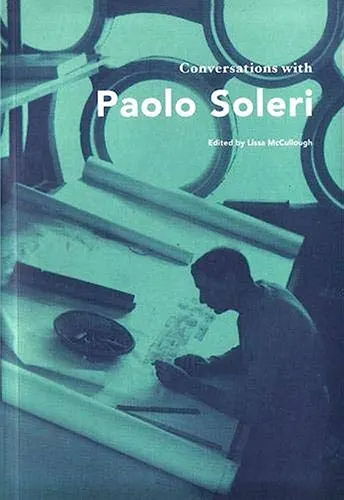
Conversations with Paolo Soleri
Paolo Soleri's architectural-philosophical thinking sets forth fundamental reformulations to address the globalizing world's most urgent environmental, urban infrastructural, and socio-ethical problems. In this book, Soleri's most recent ideas are distilled into an accessible overview for the general reader. Soleri proposes to transform our societal systems while raising sights to a radically long-term and humanistic perspective. Among the interrelated concepts outlined here are Soleri's highly original ideas of orchid and forest, the city as hyper-organism, the urban effect, and the love project. These inspiring ideas are acutely timely in light of current environmental trends: responding to global climate change, radically reducing oil dependence, embracing frugality and reduced consumption, while simultaneously confronting issues of suburban sprawl, urban renewal, smart land use, and wise food production.

Cosmic Life
Teilhard de Chardin seeks to harmonize his ardent faith with a boundless love for the cosmos. He finds solace in the belief that the incarnation unites all. Thus, surrendering oneself to the cosmic forces and gently guiding them towards good enables all beings to participate in softly unfolding a new era of harmony. Cosmic Life was the first of Teilhard’s extant writings in his characteristic style. Knowing what risks he was exposed to at the warfront, he wrote it as his intellectual testament, and it contains in embryo all that was later to be developed in his thought; the “fire in his vision” which he tried to communicate.
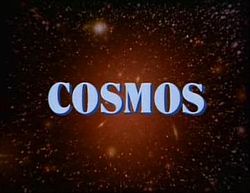
One Voice in the Cosmic Fugue
Cosmos, Episode 2
Sagan discusses the story of the Heike crab and artificial selection of crabs resembling samurai warriors, as an opening into a larger discussion of evolution through natural selection (and the pitfalls of intelligent design). Among the topics are the development of life on the Cosmic Calendar and the Cambrian explosion; the function of DNA in growth; genetic replication, repairs, and mutation; the common biochemistry of terrestrial organisms; the creation of the molecules of life in the Miller-Urey experiment; and speculation on alien life (such as life in Jupiter's clouds). In the Cosmos Update ten years later, Sagan remarks on RNA also controlling chemical reactions and reproducing itself and the different roles of comets (potentially carrying organic molecules or causing the Cretaceous–Paleogene extinction event).

The Backbone of Night
Cosmos, Episode 7
Carl Sagan teaches students in a classroom in his childhood home in Brooklyn, New York, which leads into a history of the different mythologies about stars and the gradual revelation of their true nature. In ancient Greece, some philosophers (Aristarchus of Samos, Thales of Miletus, Anaximander, Theodorus of Samos, Empedocles, Democritus) freely pursue scientific knowledge, while others (Plato, Aristotle, and the Pythagoreans) advocate slavery and epistemic secrecy.

Journeys in Space and Time
Cosmos, Episode 8
Ideas about time and space are explored in the changes that constellations undergo over time, the redshift and blue shift measured in interstellar objects, time dilation in Albert Einstein's theory of relativity, the designs of both Leonardo da Vinci and spacecraft that could travel near light speed, time travel and its hypothetical effects on human history, the origins of the Solar System, the history of life, and the immensity of space. In Cosmos Update, the idea of faster-than-light travel by wormholes (researched by Kip Thorne and shown in Sagan’s novel Contact) is discussed.

The Lives of the Stars
Cosmos, Episode 9
The simple act of making an apple pie is extrapolated into the atoms and subatomic particles (electrons, protons, and neutrons) necessary. Many of the ingredients necessary are formed of chemical elements formed in the life and deaths of stars (such as our own Sun), resulting in massive red giants and supernovae or collapsing into white dwarfs, neutron stars, pulsars, and even black holes. These produce all sorts of phenomena, such as radioactivity, cosmic rays, and even the curving of spacetime by gravity. Cosmos Update mentions the supernova SN 1987A and neutrino astronomy.

The Persistence of Memory
Cosmos, Episode 11
The idea of intelligence is explored in the concepts of computers (using bits as their basic units of information), whales (in their songs and their disruptions by human activities), DNA, the human brain (the evolution of the brain stem, frontal lobes, neurons, cerebral hemispheres, and corpus callosum under the Triune Brain Model), and man-made structures for collective intelligence (cities, libraries, books, computers, and satellites). The episode ends with speculation on alien intelligence and the information conveyed on the Voyager Golden Record.

Encyclopædia Galactica
Cosmos, Episode 12
Questions are raised about the search for intelligent life beyond the Earth, with UFOs and other close encounters refuted in favor of communications through SETI and radio telescope such as the Arecibo Observatory. The probability of technically advanced civilizations existing elsewhere in the Milky Way is interpreted using the Drake equation and a future hypothetical Encyclopedia Galactica is discussed as a repository of information about other worlds in the galaxy. The Cosmos Update notes that there have been fewer sightings of UFOs and more stories of abductions, while mentioning the META scanning the skies for signals.

Who Speaks for Earth?
Cosmos, Episode 13
Sagan reflects on the future of humanity and the question of "who speaks for Earth?" when meeting extraterrestrials. He discusses the very different meetings of the Tlingit people and explorer Jean-Francois de La Perouse with the destruction of the Aztecs by Spanish conquistadors, the looming threat of nuclear warfare, and the threats shown by destruction of the Library of Alexandria and the murder of Hypatia. The episode ends with an overview of the beginning of the universe, the evolution of life, and the accomplishments of humanity and makes a plea to mankind to cherish life and continue its journey in the cosmos. The Cosmos Update notes the preliminary reconnaissance of planets with spacecraft, the fall of the Berlin Wall and the end of apartheid in South Africa, and measures towards the reduction of nuclear weapons.

Crafting Destiny, Exploring the Unknown
Academy Award-winning actor Matthew McConaughey asks Sadhguru about karma, crafting one’s destiny, the connection between yoga and religion, and exploring the unknown. Sadhguru offers insights on how we should not confuse our lifestyle (a consequence of the times we live in) with life, the real thing!
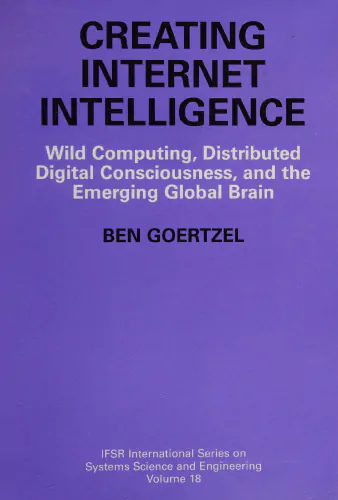
Creating Internet Intelligence
Wild Computing, Distributed Digital Consciousness, and the Emerging Global Brain
Creating Internet Intelligence explores the potential for global computer networks to evolve into autonomous intelligent systems, offering practical guidance for shaping this future. It presents a theory of intelligent systems and examines “Internet intelligence” through commercial, social, psychological, and philosophical lenses. Goertzel details pioneering software like the Webmind AI Engine and Webworld platform, designed to seed this evolution. This interdisciplinary work appeals to computer scientists, philosophers, and anyone intrigued by the intersection of technology, intelligence, and human life.
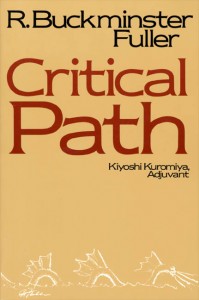
Critical Path
Critical Path is Fuller’s master work—the summing up of a lifetime’s thought and concern—as urgent and relevant as it was upon its first publication in 1981. The book details how humanity found itself in its current situation—at the limits of the planet’s natural resources and facing political, economic, environmental, and ethical crises. The crowning achievement of an extraordinary career, Critical Path offers the reader the excitement of understanding the essential dilemmas of our time and how responsible citizens can rise to meet this ultimate challenge to our future.

Culture and Ideology are not Your Friends
Terence McKenna argues that culture and ideology limit human potential, while psychedelic experiences offer a path to expanded consciousness and connection with nature. He sees the universe as evolving towards increasing novelty and complexity, with human society at a critical juncture. McKenna criticizes modern values and institutions, advocating for a return to shamanic practices and plant-based wisdom. He believes psychedelics can rapidly induce the radical shift in perspective needed to address global challenges and unlock humanity's true potential in an accelerating world of technological change.

DMT and Integrated Information Theory
Neuroscientist Christof Koch’s 5-MeO-DMT experience, marked by self-dissolution and “terror and ecstasy,” sparks a deep discussion on consciousness, Integrated Information Theory (IIT), and reality. IIT suggests consciousness is non-computable and may exist beyond individual brains, potentially forming higher-order minds. Koch inquires whether his psychedelic journey was a mere brain state or a glimpse into a universal mind.

Determining our Future
Jonas Salk opened the 1975 Lindisfarne Association Conference with a talk proposing that humanity’s becoming conscious of the evolutionary process implies the ability to develop strategies to avoid catastrophe and determine the future.

Dynamics of Hyperspace
Abraham and McKenna explore the limitations of traditional maps of consciousness, like those of Freud and Jung, in understanding psychedelic experiences. They propose that psychedelics offer access to a hyperspace beyond the human dimension, requiring new languages and metaphors to map and share these experiences. They discuss the role of consciousness evolution, potential guidance from higher intelligence, and the challenges and opportunities presented by technology and social structures in navigating this uncharted territory.
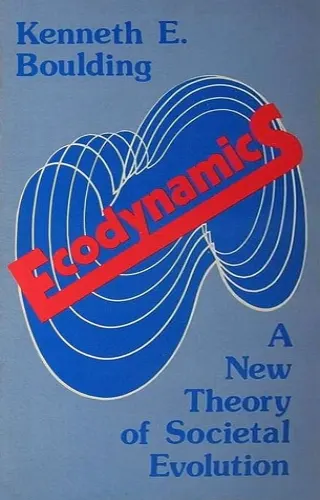
Ecodynamics
A New Theory of Societal Evolution
Embark on a captivating journey into Ecodynamics, a realm where the choreography of humanity and nature unfolds. This narrative intricately weaves economics, ecology, and human behavior, illuminated by Boulding's visionary concept of ecodynamics. His framework reveals the harmonious yet fragile bond between ecosystems and economies, a bond often ignored at our peril. Boulding's interdisciplinary exploration spans from population dynamics to resource usage and technology's role, dismantling the myth of infinite growth in a finite world. Ecodynamics challenges norms, offering profound insights that beckon us to adopt sustainable practices. This clarion call echoes—safeguard both civilization and the environment for lasting well-being.

Economic Possibilities for our Grandchildren
Keynes argues that due to technological advancements and capital accumulation, the economic problem of scarcity will be solved within a century, ushering in an age of abundance. He predicts higher living standards, shorter workweeks, and a shift in moral values away from the love of money. However, he cautions that this transition will be challenging, requiring society to find new purpose beyond subsistence.

Elements of a Philosophy of Technology
On the Evolutionary History of Culture
A visionary study of the human body and its relationship with the world that surrounds it. At the book’s core is the concept of “organ projection”: the notion that humans use technology in an effort to project their organs to the outside, to be understood as “the soul apparently stepping out of the body in the form of a sending-out of mental qualities” into the world of artifacts. Kapp applies this theory of organ projection to various areas of the material world—the axe externalizes the arm, the lens the eye, the telegraphic system the neural network. From the first tools to acoustic instruments, from architecture to the steam engine and the mechanic routes of the railway, Kapp’s analysis shifts from “simple” tools to more complex network technologies to examine the projection of relations. What emerges from Kapp’s prophetic work is nothing less than the early elements of a cybernetic paradigm.

Eros and the Eschaton
What Science Forgot: The Importance of Human Beings
Delivered in Kane Hall at the University of Washington, Terence points out the universe's peculiar tendency to seek out complexity and novelty, and that humanity seems to be the focal point of this process.

Evolution of the Idea of Evolution
Teilhard reveals that evolution has outgrown its origins as a mere biological theory to become the universe’s own heartbeat—a vast, unfolding process shaping matter, mind, and meaning alike. Once we thought ourselves its observers; now we awaken as its apex and instrument, the conscious spearpoint of creation’s long ascent.
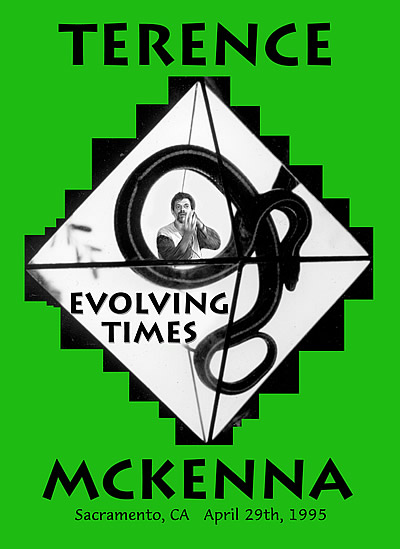
Evolving Times
This evening address is one of Terence’s funniest, in which much is said about monkeys, mushrooms, plants, and people. The question and answer session gets good and lively, with his unique analysis of UFOs, governments, and possible evolutionary pathways for us and the planet.

Fossil Man
Reflections on a Recent Book
This essay by Pierre Teilhard de Chardin discusses the evolution of views on the antiquity of man over the last century. It highlights Marcellin Boule's book, Les Hommes Fossiles, which presents the author's research on human origins, particularly Neanderthal man. The essay explores the complexity and antiquity of human evolution and emphasizes the need for reconciling scientific findings with religious beliefs. It suggests that humanity's material origins can be understood as a prolonged effort of the Earth as a whole, and it calls for embracing all rays of light from science and faith to find a unified understanding of human origins.

Four Ways to the Center
Can an ego overcome egocentrism? Can a self become selfless? Is there even any value in this pursuit, and if so, how should one approach it? Through renunciation and repentance, or through acceptance and merging into it? Many consciousnesses encounter this conundrum on the brisk seas of being, and Alan invites us to take a closer look at our so-called individuality.

From Anthropocene to Noosphere
The Great Acceleration
Since 1950, humanity has accelerated its population growth, energy use, and release of greenhouse gases, along with a variety of other environmentally and socio-economically significant trends. Taken together, this set of accelerated human-driven trends has been called the “Great Acceleration,” and its occurrence helps explain recent climate change and ecological disturbance. In this article, I explore two dominant but divergent paradigms for what is happening to our species as it becomes globalized and continues in the Great Acceleration. One of the paradigms is related to the newly proposed geological epoch of the “Anthropocene” (the Age of the Human Being), which sees the Great Acceleration as a rupture in our relationship to the Earth System. The other paradigm centers on the concept of a “Noosphere” (a sphere of thought) and proposes that human beings are forming a planetary awareness through these interlocking and accelerating trends. I argue that we need to learn from both paradigms to achieve a balanced understanding of the Great Acceleration.
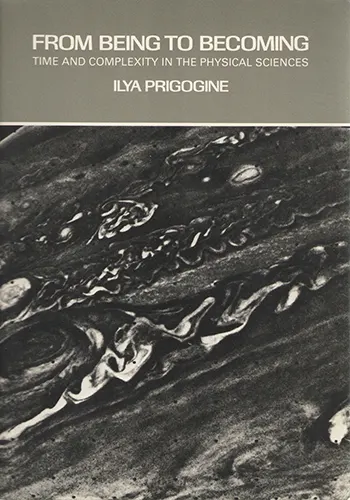
From Being to Becoming
Time and Complexity in the Physical Sciences
How has order emerged from chaos? In this book, intended for the general reader with some background in physical chemistry and thermodynamics, Ilya Prigogine shows how systems far from equilibrium evolve elaborate structures: patterns of circulation in the atmosphere, formation and propagation of chemical waves, the aggregation of single-celled animals. In an effort to understand these phenomena, he explores the philosophical implications of the work for which he received the 1977 Nobel Prize in Chemistry. From Being to Becoming explains how order can develop and offers a new approach to the asymmetry between past and future—the irreversibility of time. Prigogine presents an evolving rather than static world. This imaginative work is sure to arouse controversy and may change the way that the reader sees the laws of science and the world that those laws seek to explain.
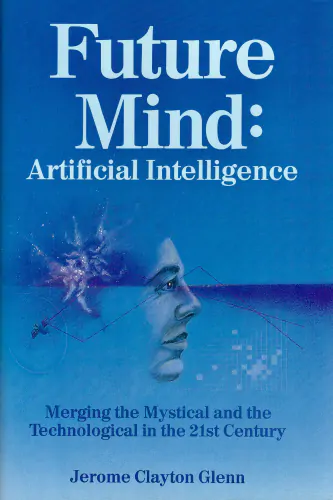
Future Mind
Artificial Intelligence: Merging the Mystical and the Technological in the 21st Century
Glenn examines the potential for future integration between man and machine drawing on examples in medicine (the Jarvik heart, Utah arm, Triad hip, etc) and advances in human-like processing via machine in terms of speech recognition and other information technologies. While the author touches on topics ranging from philosophy and religion to science and politics, the unifying theme is what he sees as the inescapable blending of machine-enhanced humans and ‘conscious’ artificial intelligence.
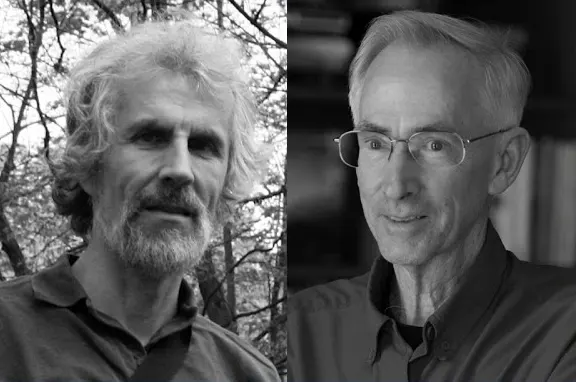
Glimpsing the Global Brain
Complex systems theorist Heylighen and evolutionary biologist Wilson discuss a possible phase transition of humanity in which the members of our species become neurons in a planetary brain, utilizing the Internet as a shared exocortex.

Global Perspectives and Psychedelic Poetics
Behind closed eyelids, an inward odyssey unfolds to the ancestral logos, beckoning with alien glossolalia. In the self-revealing chaosmos, we are the culture-jammers, launching meme-madness, art-bombs heralding the Archaic Revival. The great mother calls us home through the green, organic internet. Dance the cosmic giggle or perish amidst the ruins of history.

Having Archaic and Eating it Too
Feeding back to the psychedelic community of Los Angeles, Terence McKenna delivers colorful and astounding visual transformations. He weaves a galactic tapestry of art-tickled articulations of the history and future of psychedelic alchemy, the government/culture clash, and the surging general ordering of chaos from UFOs to archaic shamanism. This recording will amuse anyone interested in subjects ranging from eco-tourism to techno-junkies.

Hominization
Introduction to a Scientific Study of the Phenomenon of Man
In one of his earliest writings on the topic, Teilhard de Chardin explores humanity’s unique place in evolution. He argues that humans represent an entirely new phase of life on Earth—the noosphere, or sphere of conscious thought. While physically similar to other primates, humans are revolutionary in their ability to use tools, form global connections, and reflect on their own existence. This self-awareness comes with both great power and great risk, as humans can choose to either advance or resist evolution’s push toward greater consciousness and unity.
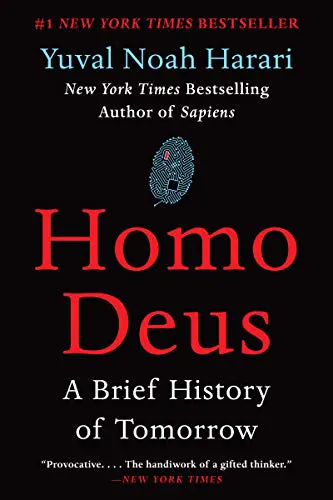
Homo Deus
A Brief History of Tomorrow
Yuval Noah Harari envisions a not-too-distant world in which we face a new set of challenges. He examines our future with his trademark blend of science, history, philosophy, and every discipline in between. Homo Deus explores the projects, dreams and nightmares that will shape the twenty-first century—from overcoming death to creating artificial life. It asks the fundamental questions: Where do we go from here? And how will we protect this fragile world from our own destructive powers? This is the next stage of evolution.

Hot Concepts and Melting Edges
A weekend workshop held at Esalen, with the alternate titles of Deeper and Broader Questions and Eros, Chaos, and Meaning's Edge.

How May We Conceive And Hope That Human Unanimization Will Be Realized On Earth?
Amid the depressing spectacle of human chaos, Teilhard sees glimmers of hope for unanimity. Geographic crowding and intellectual cross-pollination compress us, while deeper forces of attraction pull us together—a rekindled sense of shared species-destiny, and for some, a longing for a “universal lover” at the apex of cosmic evolution to which all egos could converge. Might such planetary energies of compression and gravitational yearning ultimately triumph over our instincts for dispersal? Teilhard dares to envision an inexorable trajectory toward an “Omega” unifying human consciousness.

Human Civilization and AI
Musk and Rogan discuss the existential risk of uncontrolled artificial intelligence. They explore possibilities for regulation and oversight, the potential for human-AI symbiosis through brain-computer interfaces, and the philosophical implications of advanced AI surpassing human intelligence.

Human Metasystem Transition (HMST) Theory
This article proposes a theory of human evolution termed Human Metasystem Transition (HMST), suggesting that major transitions in human organization have been facilitated by the emergence of new information media and energy sources. It posits that the current convergence of the Internet and renewable energy could catalyze a fourth metasystem transition, leading to a global superorganism with compressed spatial and temporal dimensions of human interaction.

Imagination in the Light of Nature
Terence claims that “the boundless creativity of the human mind will be tapped into and come to our aid.” His bold statement is followed by an inspirational pep-talk about how miraculous the appearance of consciuosness in this universe is, and what a valuable potential humans represent in future cosmic evolution.

In the Valley of Novelty
Journeying through multiple dimensions of psychedelic consciousness, Terence McKenna's visionary weekend workshop invites us on an entheogenic voyage to the frontiers of the mind and its imminent conquering of matter. Blending scientific insights with shamanic wisdom, McKenna argues that natural plant medicines like psilocybin and DMT provide portals into mystical realms and alien dimensions, catalyzing revelations about nature, reality, and the human psyche. He urges us to courageously explore these consciousness-expanding substances, seeking the gratuitous beauty and truths they unveil. For McKenna, the psychedelic experience holds secrets to our world and ourselves—if only we dare lift the veil.
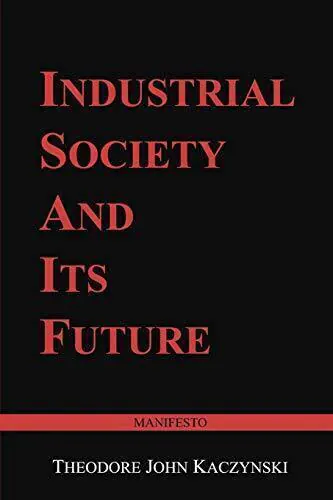
Industrial Society and Its Future
The Unabomber Manifesto
The anti-technology essay by Ted Kaczynski, also known as the Unabomber. His manifesto contends that the Industrial Revolution began a harmful process of natural destruction brought about by technology, while forcing humans to adapt to machinery, creating a sociopolitical order that suppresses human freedom and potential.
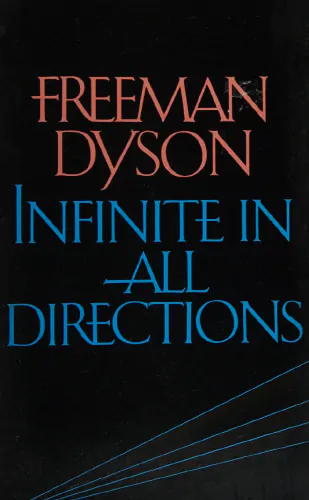
Infinite in All Directions
Infinite in All Directions explores science and religion as two complementary ways of understanding the universe. Based on Freenman Dyson's Gifford Lectures, the book celebrates diversity, both in the natural world and human responses to it. Dyson contrasts different scientific approaches using Manchester and Athens as symbols. He delves into the origin and evolution of life, highlighting how life thrives on diversity. In the final chapter, Dyson speculates on the future of life and the universe, blending science with a touch of science fiction and theology.

Information-Energy Metasystem Model
The human system is developing into a global biocultural superorganism, yet existing control systems appear inadequate for aligning a stable global goal state. Cadell Last proposes the Information-Energy Metasystem Model (IEMM), exploring human control system transitions throughout history. Drawing from cybernetic theories, the IEMM posits that major control transitions depend on specific information-energy control and feedback properties. As humanity approaches a potential fourth metasystem, Last argues for distributed, digital, and democratic mechanisms to organize a global commons, harnessing collective intelligence and direct democracy.

Intentionality of Meaning
McKenna takes us on a mind-bending ride about language, questioning if words unveil reality or cloak it. He suggests peering behind the linguistic curtain with nature and psychedelics, helping reveal life's magical depths where fairies and elves await to make deals that unleash self-transforming possibilities. But he cautions, the storytelling mushrooms can dupe you with their wit. Tread lightly.

Interview with John Hazard
Terence McKenna describes Novelty Theory to director John Hazard with an elaboration of its core principles involving hyper-complexification and the compression of time. He holds forth on the correspondences between the structure of the DNA molecule and the Chinese I-Ching, then shows how his notion of an archaic revival leads from the theories of mind and the art movements of the early twentieth century to the shaman as the quintessential figure of the twenty-first century, with psychedelic substances being the bridge between these worldviews.

Is the Emergence of Life an Expected Phase Transition in the Evolving Universe?
This article proposes a new definition of life as chemical systems that achieve catalytic closure, constraint closure, and spatial closure. It argues that the emergence of such living systems is an expected phase transition in the evolving universe. However, the ever-creative evolution of life thereafter cannot be explained by physics alone, showing the limits of reductionism. Life is a double miracle—expected yet unexplainable.

Learning to Think in a New Way
Delivered at the second Lindisfarne Association conference, Bateson challenged the relationship between “consciousness” and “evolution” and suggested what it might mean to “learn to think in a new way.”
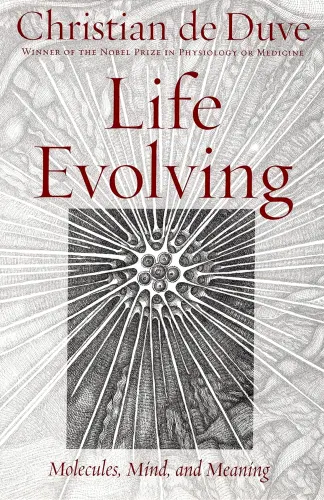
Life Evolving
Molecules, Mind, and Meaning
Christian de Duve, a Nobel Prize-winning biologist, takes readers on a journey through the biological world, from the tiniest cells to the future of life. He argues that life was bound to arise and discusses the evolution of humans, consciousness, language, science, emotion, morality, altruism, and love. De Duve concludes by speculating on humanity's future, including the possibility of evolving into a new species, and shares his thoughts on God and immortality. This wise and humane book sums up his learnings about life and our place in the universe.

Life and the Planets
Pierre Teilhard de Chardin explores the concept of complexification in the universe, focusing on the ever-increasing combination of smaller elements into larger structures, and then extrapolates this behavior to humanity's current situation. What if the human species is an intermediary evolutionary stage, and what would the next rung on the ladder look like? Teilhard suggests that it will involve the merging-together of all humanity into a divine, planetized consciousness.

Light of the Third Millennium
Speaking at the Whole Life Expo in Palmer Auditorium, Terence says our task is to surf the accelerating wave of novelty to dissolve cultural delusions. Psychedelics and technology can download new perspectives, stripping away outdated assumptions. Through imagination, language, and art we can meet the eschaton: the transcendental object at the end of time. Our task is liberate ourselves, take responsibility for our ideas, make visionary art, and find community without fear.

Limits of Art and Edges of Science
Terence McKenna proposes a radical view of history as a self-limiting process, driven by an attractor pulling us toward a transcendent, alien encounter that will transform human experience. He advocates the transformative power of psychedelics to unlock our collective potential, urging a forced evolution of language and consciousness to navigate the looming collapse of civilization and embrace the cosmic destiny of our species.

Linear Societies and Nonlinear Drugs
Speaking on the first day of the 1999 Palenque Entheobotany Conference at the Chan Kha Hotel, Terence McKenna probes the mind-blowing philosophical revelations of psychedelics. He contends these consciousness-expanding substances can shatter Western rationality, unveiling mystical realities beyond mainstream paradigms. Psychedelics may hold the key to reimagining society's connection with nature and technology. McKenna passionately argues these drugs can catalyze new ways of thinking, fueling an intellectual revolution to change the world.

Man Thinks God Knows, God Knows Man Thinks
What if language could be seen instead of heard? McKenna fancies a linguistic lark where lexicon becomes a dance of light. Words incarnate as rainbow octopi, their very skin shimmering significance. In the verbosity vortex we spin, until, lo, meaning and matter tango into one, with word becoming flesh and flesh becoming word in the ultimate semantic samba.

Man's Place in Nature
The Human Zoological Group
In this book Teilhard expounds the evolutionary history of the Earth, the arrival of the human species, and its destiny in the far future. He identifies certain threads of recurrence in evolution's past, and uses these laws of recurrence to project the most probable future destiny of the planet. Teilhard's ingenious conclusion is that evolution is in fact involuting on itself, meaning that the future (like the past) is one of convergence and synthesis, heading towards a single unity he calls the Omega Point.

Man's Place in the Universe
Reflexions on Complexity
In this unusually personal essay, Teilhard speaks almost across the table, inviting us to rethink our cosmic standing. He shows how humanity, once dwarfed by vast space and tiny particles, regains significance through a third dimension of reality: complexity. As matter organizes itself into ever-deeper centers, consciousness rises—and in us, becomes self-aware. Humanity is not a cosmic accident, he suggests, but the universe awakening to itself and preparing its next leap.
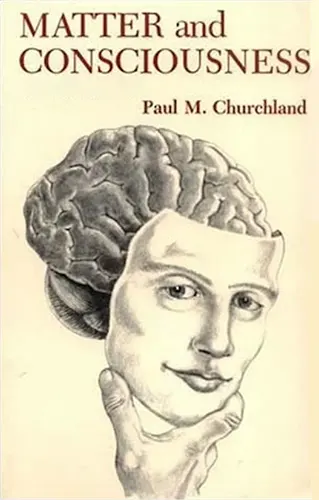
Matter and Consciousness
A Contemporary Introduction to the Philosophy of Mind
In Matter and Consciousness, Paul Churchland clearly presents the advantages and disadvantages of such difficult issues in philosophy of mind as behaviorism, reductive materialism, functionalism, and eliminative materialism. Churchland organizes and clarifies the new theoretical and experimental results of the natural sciences for a wider philosophical audience, observing that this research bears directly on questions concerning the basic elements of cognitive activity and their implementation in real physical systems. (How is it, he asks, that living creatures perform some cognitive tasks so swiftly and easily, where computers do them only badly or not at all?) Most significant for philosophy, Churchland asserts, is the support these results tend to give to thereductive and the eliminative versions of materialism.
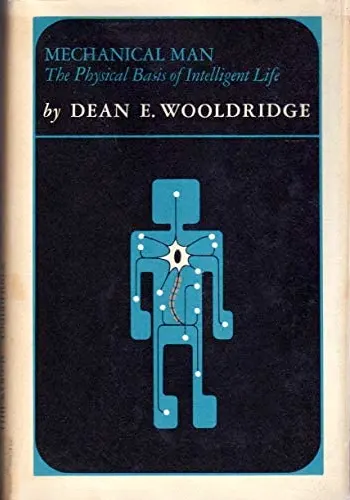
Mechanical Man
The Physical Basis of Intelligent Life
A report on modern attempts to account for the origin and properties of living organisms, including man, by means of the principles of physics. It concludes that biology is a branch of physical science, and man is only (and astoundingly) a complex kind of machine.

Megatripolis Opening Night
Terence McKenna discusses the discovery of a new legal psychedelic compound from the salvia divinorum plant. He argues that humanity is on the brink of a cultural transformation driven by the accelerating production of novelty in the universe, enabled by psychedelics and technology. He envisions a transcendental future where boundaries dissolve and consciousness evolves.
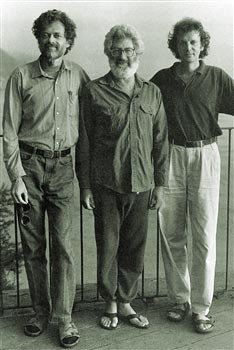
Metamorphosis
Join McKenna, Sheldrake, and Abraham on an imaginative journey into nature's creativity. Surfing the chaotic waters of psychedelic states, they catch glimpses of the Gaian mind behind Earth's being. Here, in imaginal realms beyond rationale, novelty is born. By relinquishing egoic control and surrendering to an unknowable creative force, we tap into the divine imagination—the eternal wellspring of nature's endless becomings. Immersing ourselves in this flow, we reunite with the cosmic creative essence.

Metaphysics of Psychedelics
Terence McKenna delves into the enigmatic realm of ayahuasca, unveiling its technological complexity and potential to unlock hidden dimensions of consciousness. His captivating discourse explores the interplay of mind, matter, and the imagination, hinting at the possibility of accessing realms beyond our ordinary perception.

Mind As Society
Conscious intelligence may be viewed as a computer system composed of many smaller parallel processing programs. Marvin Minsky, Ph.D., is one of the acknowledged founders of the mathematical theory of computation, artificial intelligence, and robotics. He argues that understanding the individual as a very sophisticated machine actually affirms human dignity.
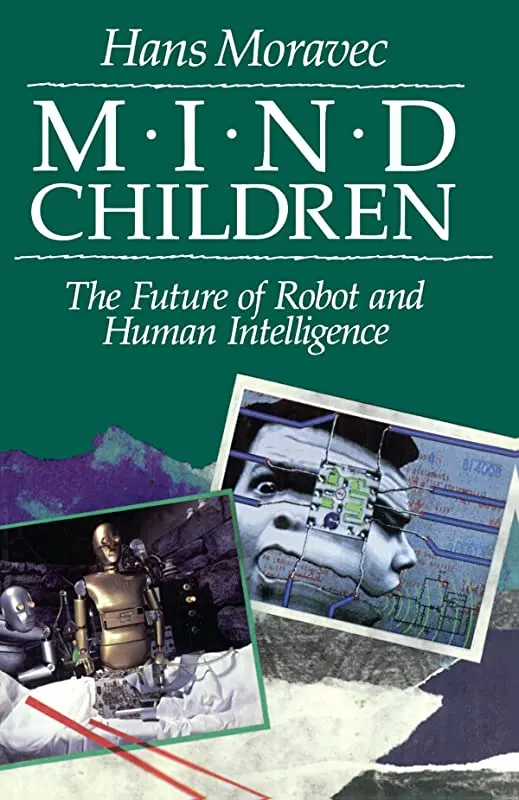
Mind Children
The Future of Robot and Human Intgelligence
Imagine attending a lecture at the turn of the twentieth century in which Orville Wright speculates about the future of transportation, or one in which Alexander Graham Bell envisages satellite communications and global data banks. Mind Children, written by an internationally renowned roboticist, offers a comparable experience: a mind-boggling glimpse of a world we may soon share with our artificial progeny. Filled with fresh ideas and insights, this book is one of the most engaging and controversial visions of the future ever written by a serious scholar.

Mind Outside Brain
A Radically Non-Dualist Foundation for Distributed Cognition
We approach the problem of the extended mind from a radically non-dualist perspective. The separation between mind and matter is an artefact of the outdated mechanistic worldview, which leaves no room for mental phenomena such as agency, intentionality, or feeling. We propose to replace it by an action ontology, which conceives mind and matter as aspects of the same network of processes. By adopting the intentional stance, we interpret the catalysts of elementary reactions as agents exhibiting desires, intentions, and sensations. Autopoietic networks of reactions constitute more complex super-agents, which moreover exhibit memory, deliberation and sense-making. In the specific case of social networks, individual agents coordinate their actions via the propagation of challenges. The distributed cognition that emerges from this interaction cannot be situated in any individual brain. This non-dualist, holistic view extends and operationalises process metaphysics and Eastern philosophies. It is supported by both mindfulness experiences and mathematical models of action, self-organisation, and cognition.
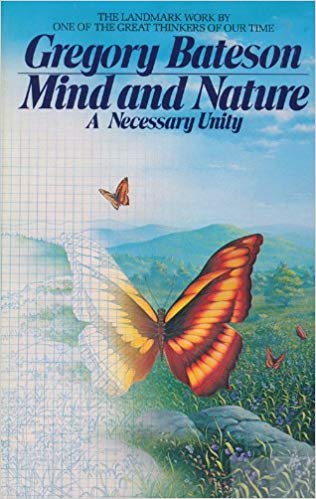
Mind and Nature
A Necessary Unity
Renowned for his contributions to anthropology, biology, and the social sciences, Bateson asserts that man must think as Nature does to live in harmony on the earth and, citing examples from the natural world, he maintains that biological evolution is a mental process.

Mushrooms, Evolution, and the Millennium
Terence McKenna asks the fundamental question concerning natural hallucinogens: is it an accident of nature that certain plants and mushrooms can alter human awareness in profound ways? He argues that man and hallucinogenic plants and mushrooms have co-evolved. These botanicals provide a way for people to experience their spiritual nature, and throughout history have been used by shamans whose function is to enter altered states in order to perceive the spiritual causes behind ordinary reality. Delivered at the Masonic Temple during a gathering of the Los Angeles Mycological Society.

Nature Loves Complexity
Terence argues that psychedelics reconnect us to archaic values like community, reverence for nature, and direct felt experience. He sees psychedelics as part of nature's tendency to conserve complexity and novelty. McKenna critiques science's misapplication of probability theory and suggests time itself fluctuates, finally proposing an ethics of aligning with nature's creative unfolding.

Nature is the Center of the Mandala
Presented at the Shared Visions bookstore, Terence talks about humanity's path towards greater consciousness, and attempts to take a glance at what comes after the Omega Point.
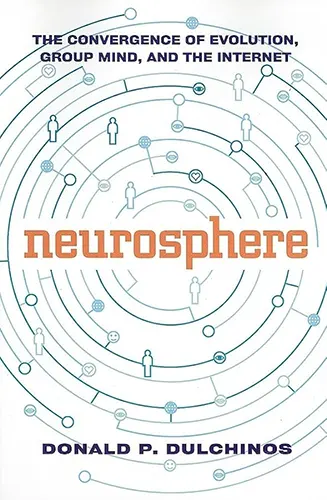
Neurosphere
The Convergence of Evolution, Group Mind, and the Internet
According to Donald Dulchinos, the real action on the Internet isn’t in the realm of commerce. It is, plain and simple, in the realm of religion. But not exactly that old-time religion. This book is about the spiritual impact of our increasing ability to communicate quickly and with enhanced evolution. It's about our search for meaning, our hunger for a glimpse at humanity's future development in which, frighteningly or excitingly, the trend is clearly toward increasing integration of telecommunications and information technology with the body itself. Electronic prosthetics, direct neural implants, and the brain's control of electronic and mechanical limbs move the boundary that used to exist between human and machine to some undefined frontier inside our bodies, our brains, and, perhaps, our minds.

New Maps of Hyperspace
McKenna proposes that history is a nightmare we must awaken from, and psychedelics can unveil a parallel reality: a hyperspatial realm where the human soul transcends physical constraints. He envisions a transformative future where technology catalyzes our species' metamorphosis into a hyperspatial entelechy, blending mind, matter and the mystical. This radical exploration of consciousness, time, and the Apocalypse offers a profound, mind-expanding journey into the esoteric frontiers of human potential.

Note on the Biological Structure of Mankind
Humanity isn’t raw clay, but a living, evolving organism shaped by deep cosmic laws. As consciousness and complexity entwine, the human mass tightens, organizes, and spiritualizes itself. Diversity must be honored, unity embraced. Any blueprint for the future that ignores these biological forces is doomed from the start.

Note on the Present Reality and Evolutionary Significance of a Human Orthogenesis
Has evolution stalled at humanity? No, says Teilhard—it has shifted. As biology grows more complex, humans fuse into a collective mind, revealing that evolution is becoming self-directed. In us, life stops merely unfolding and begins consciously arranging the world and itself.

On Looking at a Cyclotron
Reflections on the Folding-Back upon Itself of Human Energy
Visiting Berkeley’s cyclotrons, Teilhard de Chardin sees more than machines—he perceives symbols of humanity’s own acceleration. Our vast networks of research, energy, and invention, converging like particles in a magnetic field, are drawing humankind into a single reflective consciousness—an evolutionary spiral toward the ultra-human, where science and spirit finally unite.

On The Probable Existence Ahead Of Us Of An ‘Ultra-Human’
Teilhard talks about a vast realm of the Ultra-Human which lies ahead of us: a realm in which we shall not be able to survive, or super-live, except by developing and embracing on earth, to the utmost extent, all the powers of common vision and unanimazation that are available to us.

On the Nature of the Phenomenon of Human Society, and its Hidden Relationship with Gravity
We stand at the dawn of a new era for humanity. As Teilhard de Chardin observed, cosmic forces are propelling our social evolution. Though born of gravitational forces, our consciousness now rises with its own creative power to bring forth previously unimagined realms of thought and social organization. Our future lies in our hands.
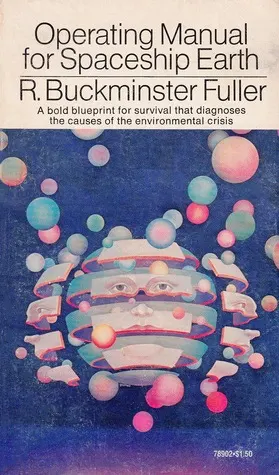
Operating Manual for Spaceship Earth
In this essay on man, Mr. Fuller expresses what may well be his penultimate view of the human condition. Here, in a mood at once philosophical and involved, he traces humanity's intellectual evolution and weighs our capability for survival on this magnificent craft, this Spaceship Earth, this superbly designed sphere almost negligible in dimension compared to the great vastness of space. Mr. Fuller is optimistic that we will survive and, through research and development and increased industrialization, generate wealth so rapidly that we can do very great things. But, he notes, there must be an enormous educational task successfully accomplished right now to convert our tendency toward oblivion into a realization of his potential, to a universe-exploring advantage from this Spaceship Earth.

Order Through Fluctuation
Self-Organization and Social System
A thorough mathematical analysis of the spontaneous arising of new order in a fluctuating system, and how insights from dissipative chemical systems may be applied to large-scale social contexts.

Our Cyberspiritual Future
Terence holds court on our civilization's journey toward the eschaton at this weekend Esalen gathering. He riffs on topics from psychedelic states and alien intelligences to time travel and VR. McKenna argues we're evolving toward an unimaginable state of accelerating novelty, propelled by advancing technology. A mind-expanding ride for the open-minded psychonaut or armchair traveler, guided by one of the twentieth century's most eclectic thinkers.
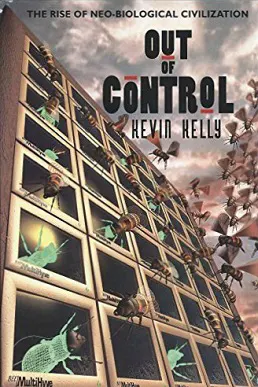
Out of Control
The New Biology of Machines, Social Systems, and the Economic World
Out of Control is a summary of what we know about self-sustaining systems, both living ones such as a tropical wetland, or an artificial one, such as a computer simulation of our planet. The last chapter of the book, “The Nine Laws of God,” is a distillation of the nine common principles that all life-like systems share.

Outline of a Dialectic of Spirit
Teilhard de Chardin explores how human understanding evolves through a dynamic interplay between the known and the unknown, like a spark leaping back and forth. He argues that the universe is driven by a rising complexity and consciousness, culminating in humanity. This progression points toward an ultimate convergence, or “Omega Point,” which he identifies with a transcendent God. Teilhard connects this cosmic evolution to Christianity, suggesting that Christ embodies this divine culmination, uniting the material and spiritual realms in a harmonious, evolving whole.
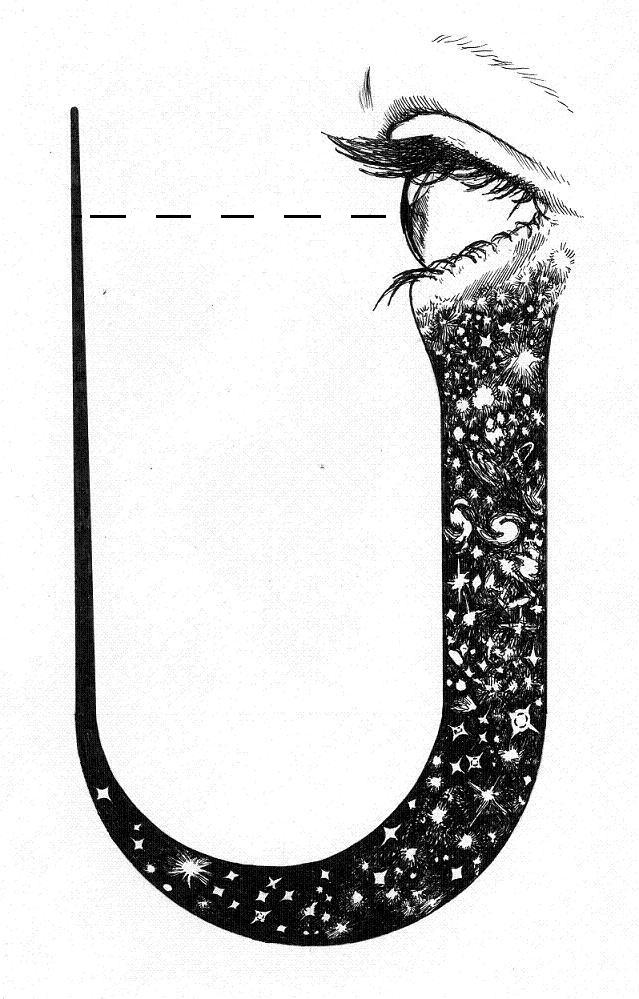
Participatory Universe
An attempt to illustrate the universe’s reflective, metacognitive nature.

Physics of Life, Time, Complexity, and Aliens
Sara Walker and Lex Fridman explore life’s grand mysteries, touching on the nature of existence and the origins of life to the potential of artificial intelligence and the future of consciousness. Walker’s unique perspective challenges conventional wisdom, inviting us to reconsider our place in the cosmic dance.
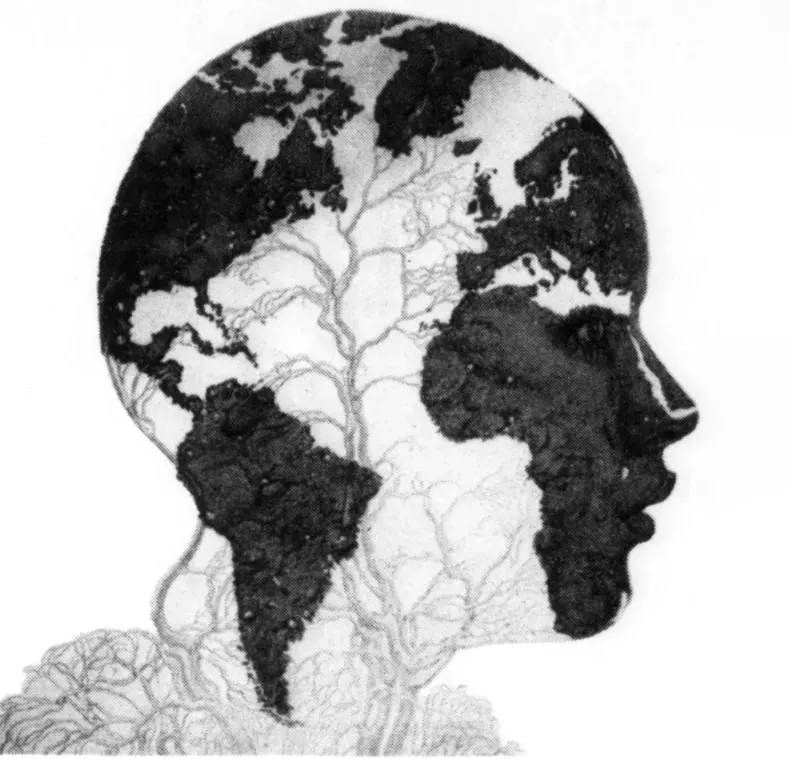
Plan, Plant, Planet
McKenna urges us to look at plants more deeply and find within their biological organization a model for sustainable modern civilization.
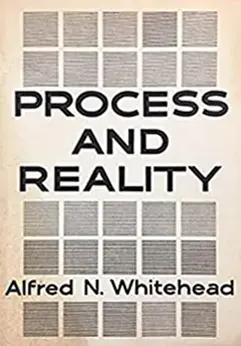
Process and Reality
An Essay in Cosmology
One of the major philosophical texts of the twentieth century, Process and Reality is based on Alfred North Whitehead’s influential lectures that he delivered at the University of Edinburgh in the 1920s. In it, he propounds a philosophy of organism (or process philosophy), in which the various elements of reality are brought into a consistent relation to each other. It is also an exploration of some of the preeminent thinkers of the seventeenth and eighteenth centuries, such as Descartes, Newton, Locke, and Kant.

Progress Through Fear
A talk on the impact of science and technology on man's role in the natural world.

Psychedelics and Mathematical Vision
Through visions and swirling fractal forms, three trailblazers embarked on a cosmic journey to the furthest frontiers of consciousness. Seeking to map the mathematical landscapes glimpsed in psychedelic states, they pondered perplexing philosophies and disputed the deepest quandaries of science and spirit. Though technology promises portals to enchanted realms of pattern and meaning, can cold silicon chips ever capture the warmth of Gaia's embrace?

Psychedelics and the Computer Revolution
Psychedelics unlock the mind's eye, let mathematicians fly To landscapes unseen, where patterns careen in colors serene. As symbols may hide truths inside, these vines we must untwine. With psychedelics we'll refine new ways for minds to shine: Computers give form, classics reborn, realms to adorn. Together they'll fuse, creativity diffuse, inventions produce! So let inhibitions loose, imagine the use, as we choose the hues Of mathematical views, and virtual worlds that enthuse!

Rap Dancing into the Third Millennium
(Packing For The Long Strange Trip)
Terence’s second workshop at Starwood Festival XIV. The approaching new millenium, its perils, and its promise will be the theme of this intimate workshop. We will analyze and review the past thousand years with an eye to trends and opportunities that the future may bring. Western civilization is caught in a phase transition to the first planet-wide, species-wide civilization. Does the emergence of a shared set of universal values—democracy, free markets, and the dignity of the individual—have to mean the end of diversity and pluarlism? What does human self-imaging through technology portend to each of us? Is the human race down for the count, or on the brink of its greatest adventure? Psychedelics, virtual reality, and the transformative power of magic and language will be topics for discussion.

Realizing Human Potential
What untapped gifts lie dormant within us? Aldous Huxley digs for hidden treasure in the human psyche. He proposes mining the world's traditions to unearth practical techniques for actualizing our latent potential. From revamping education for enhanced perception and creativity, to fostering awareness and kindness, Huxley lays out a thought-provoking vision for human flourishing.

Reflection of Energy
Teilhard de Chardin sees human reflection as an evolutionary force escaping entropy's grasp. Emerging from life's intrinsic complexity, reflection leads mankind on an irreversible journey of deepening interiority. Through convergence and collective self-reflection, we approach a sacred point of supreme arrangement and unity. Teilhard argues that to fully encompass life's mystery in science, the reflection of energy must join conservation and dissipation as key principles. Understanding reflection's role illuminates both human destiny and the cosmos' underlying divinity.

Reflection on the Compression of Mankind
In this compressed world, humanity feels the squeeze. But despair not! This pressure cooker of co-reflection may be evolution's secret recipe for elevating consciousness. As we rub elbows and neurons, a tantalizing possibility emerges on the horizon: a cosmic convergence of minds, a "conspiration" of monads. Will this psychic attraction be our salvation, harmonizing the restless billions? The thinking earth must choose: chaotic crush or convergent release. Intriguing times ahead!

Reflections on the Scientific Probability and the Religious Consequences of an Ultra-Human
Evolution as a cosmic drama: matter rising through life into reflective humanity, converging toward a planetary mind. Teilhard says this “ultra-human” destiny fuses science and spirit, where God is not above but ahead—emerging as love at the core of creation, and igniting the world into a conscious fire.
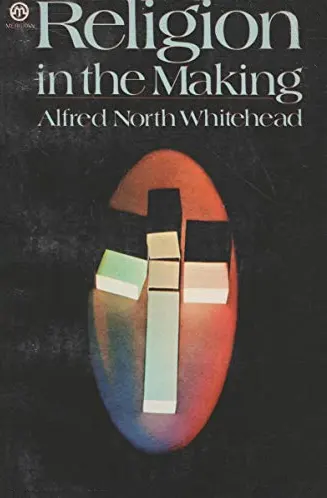
Religion in the Making
Four lectures on religion delivered in Boston's King’s Chapel. Whitehead's train of thought, which was applied to science in his Lowell Lectures (Science and the Modern World), was here applied to religion. The aim of the lectures was to give a concise analysis of the various factors in human nature which go to form a religion, to exhibit the inevitable transformation of religion with the transformation of knowledge, and more especially to direct attention to the foundation of religion on our apprehension of those permanent elements by reason of which there is a stable order in the world, permanent elements apart from which there could be no changing world.

Reviving the Archaic
A New View of Evolution
Terence McKenna unveils an “archaic revival” that could save humanity and our planet. He makes the controversial claim that psychedelic plants catalyzed the emergence of human consciousness, language, and our fertile imaginations eons ago. McKenna advocates reviving the shamanic practices and partnership values of our prehistoric ancestors to transcend the isolated ego and re-establish a symbiotic relationship with nature’s “great piece of integrated linguistic machinery.” His boundary-dissolving ideas shatter conventional thinking about our past, present, and the transformative possibilities for our collective future.

Ripples and Puddles
Robotics pioneer Hans Moravec traces the evolution of artificial intelligence, contrasting the "shallow ripples" of reasoning programs with the "deep puddles" of perception systems. Though reasoning AIs currently outperform humans on some tasks, Moravec contends they cannot match the murky depths of the subconscious mind. Instead, he foresees a new generation of increasingly capable consumer robots, their lizard- then mammal-like brains modeled on biology. Passing through stages akin to evolution, Moravec argues market forces will drive these machines to one day exceed human intelligence.

Rise of the Robots
By 2050 robot "brains" based on computers that execute 100 trillion instructions per second will start rivaling human intelligence.

Is There a Way Out of the Crisis in the World?
Saanen 1979, Part 1
Is there another kind of thinking which is not about something? When you give attention completely, is there a center from which you attend? Can self-centered problems be solved without a different quality of thinking? When there is no tomorrow, psychologically, what happens to the quality of your mind? Then what is your relationship to another? In thinking together, is there opposition? Where does thinking together lead in my relationship to another?

Sacred Plants as Guides
New Dimensions of the Soul
Terence McKenna takes us on a journey through history, exploring the powerful role of psychedelic plants in human evolution and consciousness. He argues that these plants offer a gateway to hidden realms of reality, inhabited by enigmatic entities and offering profound insights. Reconnecting with these ancient allies could be the key to solving our modern problems and unlocking a brighter future for humanity.

Satori Before Singularity
What if future AIs achieved enlightenment before world domination? Shanahan suggests a truly advanced AI might transcend the human ego, dropping our obsession with the “self.” Instead of triggering a runaway intelligence explosion, such a being could attain satori: a Zen-like peace that halts the singularity in its tracks.
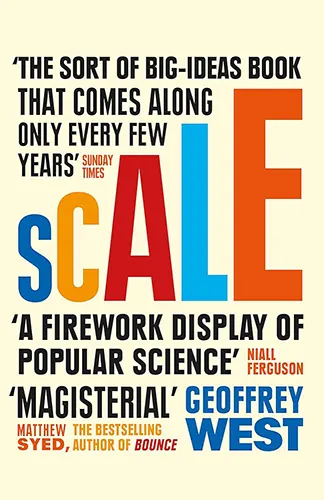
Scale
The Universal Laws of Growth, Innovation, Sustainability, and the Pace of Life in Organisms, Cities, Economies, and Companies
The former head of the Sante Fe Institute, visionary physicist Geoffrey West is a pioneer in the field of complexity science, the science of emergent systems and networks. The term “complexity” can be misleading, however, because what makes West’s discoveries so beautiful is that he has found an underlying simplicity that unites the seemingly complex and diverse phenomena of living systems, including our bodies, our cities and our businesses.

Science and Ethics
Science and Ethics was the title of the "Conway Memorial Lecture" delivered by English biologist, scientist and mathematician John Burdon Sanderson Haldane at Essex Hall in London.

Seeking the Stone
What if psychedelic plants sparked humanity’s awakening? McKenna (speaking at the 1991 Whole Life Expo) contends these mind-altering substances dissolved the egos of early humans, bonded communities, and revealed cosmic consciousness, catalyzing rapid cultural progress. He asserts modern society suffers from severing this link to nature and spirit, and calls us to reclaim this “archaic revival” before consumerism leads civilization over the brink.

Shamanology
Terence McKenna illuminates the world of Amazonian shamanism and its visionary brew, ayahuasca. He presents these plant hallucinogens not as simple drugs, but as sophisticated indigenous technologies for exploring consciousness. McKenna argues they are vital tools for evolving language, deconditioning us from cultural myths, and navigating the future of human evolution as we journey into the cosmos and the imagination.

Shedding the Monkey
Presented at the Shared Visions bookstore.

Simulation, Consciousness, Existence
Like organisms evolved in gentle tide pools, who migrate to freezing oceans or steaming jungles by developing metabolisms, mechanisms, and behaviors workable in those harsher and vaster environments, our descendants, able to change their representations at will, may develop means to venture far from the comfortable realms we consider reality into arbitrarily strange worlds. Their techniques will be as meaningless to us as bicycles are to fish, but perhaps we can stretch our common-sense-hobbled imaginations enough to peer a short distance into this odd territory.

Some Reflexions on the Conversion of the World
Humanity has discovered infinite space, endless time, and unstoppable evolution—a new faith in progress. Teilhard says: don’t fight it, fuse it. Christianity must reveal Christ as the universe’s living center, not a brake on growth but its ultimate flame. Only then can heaven and earth unite, and the fire of faith spread like evolution itself.

Speaking Metaphorically
Terence McKenna explores how psychedelics can alter language and consciousness, unlocking a transformative phenomenon at the heart of human evolution. He envisions a shift towards a visible, gestalt-like language of meaning that will profoundly reshape culture, enabling our species to transcend earthly confines and venture into the cosmos. Proposing psychedelics as a pheromonal regulator for collective consciousness, McKenna suggests this archaic linguistic revolution holds the keys to our future, bridging the gap between nature and technology in ways that could determine the very destiny of humanity.

State of the Stone
In this talk, McKenna gives one of his more hopeful presentations about love and the state of humanity at the end of the millenium.
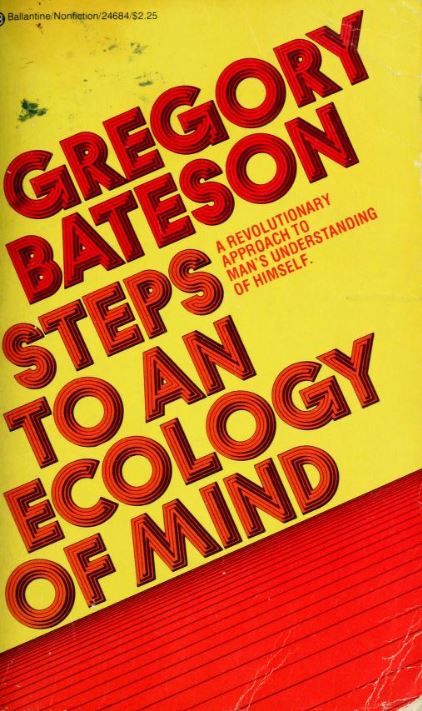
Steps to an Ecology of Mind
Here is the book which develops a new way of thinking about the nature of order and organization in living systems, a unified body of theory so encompassing that it illuminates all particular areas of study of biology and behavior. It is interdisciplinary, not in the usual and simple sense of exchanging information across lines of discipline, but in discovering patterns common to many disciplines.

Super- and/or Meta-being(s)
Could human consciousness transcend biological limits and merge with advanced technology to achieve a form of cybernetic immortality? In Heylighen’s vision, our essence suvives through evolving hybrid systems, preserving individuality while fostering unprecedented connectivity. This integration doesn’t diminish our humanity but amplifies it, allowing us to explore the cosmos and push the boundaries of existence. While not everyone may choose this path, those who do could shape the destiny of our species and the cosmos.

Super-Humanity, Super-Christ, Super-Charity
Some New Dimensions for the Future
Humanity, Teilhard argues, is awakening in an evolutionary storm—one pulling us toward a larger, more unified “Super-Humanity.” In this widening scale of mind and world, Christ emerges not as a distant memory but as the universe’s glowing center, the Omega drawing all things together. From this cosmic magnetism arises a “Super-Charity”: love powerful enough to drive evolution itself.
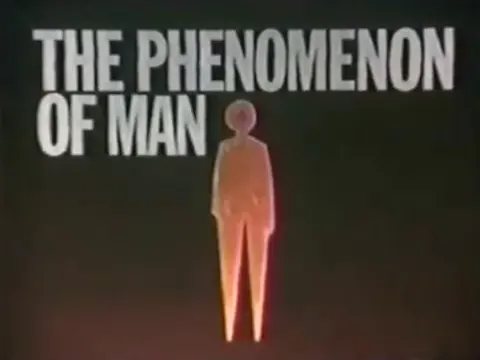
Survival
Teilhard de Chardin's book, The Phenomenon of Man, reinterpreted in a visual format to illustrate the complex topics covered therein.
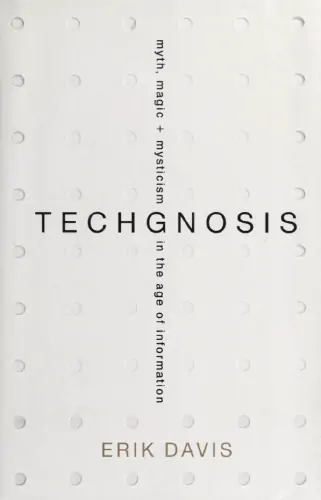
TechGnosis
Myth, Magic, and Mysticism in the Age of Information
How does our fascination with technology intersect with the religious imagination? While the realms of the digital and the spiritual may seem worlds apart, esoteric and religious impulses have in fact always permeated (and sometimes inspired) technological communication. Erik Davis uncovers startling connections between such seemingly disparate topics as electricity and alchemy; online role-playing games and religious and occult practices; virtual reality and gnostic mythology; programming languages and Kabbalah. The final chapters address the apocalyptic dreams that haunt technology, providing vital historical context as well as new ways to think about a future defined by the mutant intermingling of mind and machine, nightmare and fantasy.

Technium Unbound
What comes after the Internet? What is bigger than the web? What will produce more wealth than all the startups to date? The answer is a planetary superorganism comprised of 4 billion mobile phones, 80 quintillion transistor chips, a million miles of fiber optic cables, and 6 billion human minds all wired together. The whole thing acts like a single organism, with its own behavior and character—but at a scale we have little experience with. This is more than just a metaphor. Kevin Kelly takes the idea of a global superorganism seriously by describing what we know about it so far, how it is growing, where its boundaries are, and what it will mean for us as individuals and collectively.
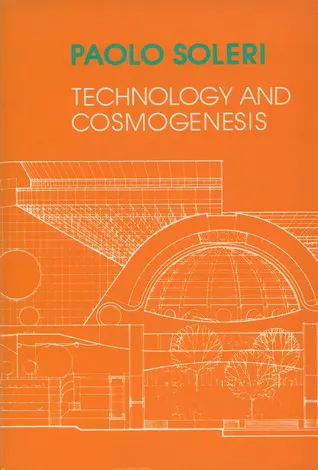
Technology and Cosmogenesis
A hopeful antidote to the destruction of man's environment caused by technology divorced from spirituality. Paolo Soleri, the renowned architect, urban planner, process philosopher and alchemist of the new spirituality of science and technology, challenges us to let go of our absolutized views of human life and creation. By this release, he holds that we can be healed by a cosmos in the process of becoming divine.

Technology and the Human Environment
Perhaps no futurist has been more energetic, more vocal, more popular, or more optimistic than a seventy-six-year-old engineer-visionary, poet-philosopher named R. Buckminster Fuller. Fuller’s planetary perspective has won him zealous converts the world over. Even those who disagree with his technological transcendentalism share unbegrudged admiration for the world’s youngest old futurist.

The Activation of Human Energy
Teilhard sees human energy not as brute force but as consciousness folding back on itself, organizing matter into ever greater complexity. Our survival rests less on fuel than on vision and will. This energy converges toward a final peak—an irreversible surge of awareness—suggesting that spirit, not physics, is the true engine of the cosmos.
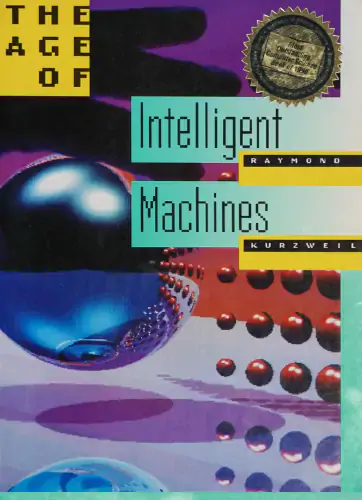
The Age of Intelligent Machines
Inventor and visionary computer scientist Ray Kurzweil probes the past, present, and future of artificial intelligence, from its earliest philosophical and mathematical roots to tantalizing glimpses of 21st-century machines with superior intelligence and truly prodigious speed and memory. Generously illustrated and easily accessible to the nonspecialist, this book provides the background needed for a full understanding of the enormous scientific potential represented by intelligent machines as well as their equally profound philosophic, economic, and social implications.
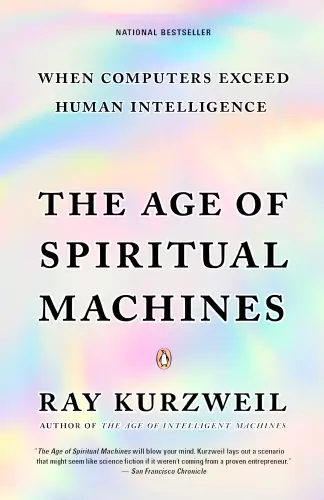
The Age of Spiritual Machines
When Computers Exceed Human Intelligence
Imagine a world where the difference between man and machine blurs, where the line between humanity and technology fades, and where the soul and the silicon chip unite. This is not science fiction. This is the twenty-first century according to Ray Kurzweil, the “restless genius,” “ultimate thinking machine,” and inventor of the most innovative and compelling technology of our era. In his inspired hands, life in the new millennium no longer seems daunting. Instead, it promises to be an age in which the marriage of human sensitivity and artificial intelligence fundamentally alters and improves the way we live.

The Analysis of Life
Life's essence transcends scientific scrutiny. Though such examination reduces life to physical mechanisms, synthesis reveals the boundless consciousness and freedom underlying all existence. As Teilhard de Chardin contemplated, life organizes chance through each being's innate creativity. From this vision, we can glimpse life's mystical emergence.
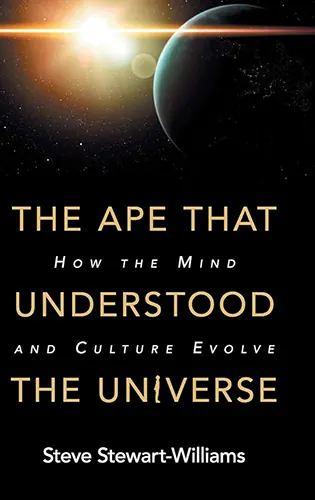
The Ape that Understood the Universe
How the Mind and Culture Evolve
The Ape that Understood the Universe is the story of the strangest animal in the world: the human animal. It opens with a question: How would an alien scientist view our species? What would it make of our sex differences, our sexual behavior, our child-rearing patterns, our moral codes, our religions, our languages, and science? The book tackles these issues by drawing on ideas from two major schools of thought: evolutionary psychology and cultural evolutionary theory. The guiding assumption is that humans are animals, and that like all animals, we evolved to pass on our genes. At some point, however, we also evolved the capacity for culture—and from that moment, culture began evolving in its own right. This transformed us from a mere ape into an ape capable of reshaping the planet, travelling to other worlds, and understanding the vast universe of which we're but a tiny, fleeting fragment.
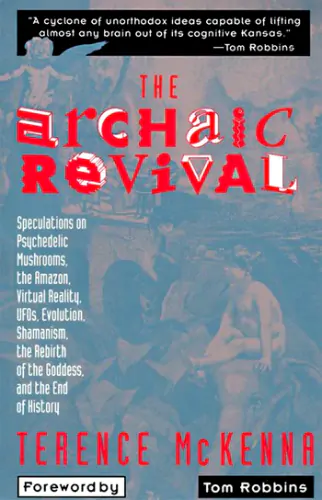
The Archaic Revival
Speculations on Psychedelic Mushrooms, the Amazon, Virtual Reality, UFOs, Evolution, Shamanism, the Rebirth of the Goddess, and the End of History
In these essays, interviews, and narrative adventures, McKenna takes us on a mesmerizing journey deep into the Amazon as well as into the hidden recesses of the human psyche and the outer limits of our culture, giving us startling visions of the past and future.
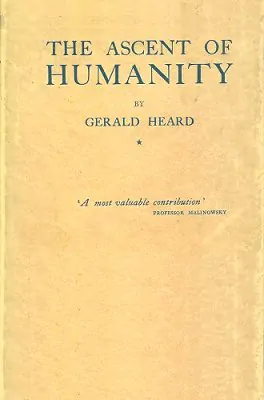
The Ascent of Humanity
An Essay on the Evolution of Civilization from Group Consciousness Through Individuality to Super-consciousness
Gerald Heard presents a novel view of history and civilization as the evolution of human consciousness, moving from collective group awareness to individual self-consciousness and beyond. Heard argues that primitive humans were deeply connected to their communities and less aware of individuality, while modern humans are highly self-conscious but separated from their unconscious minds and one another. He suggests that further progress requires advancing towards "superconsciousness," where individuals bridge these divides.
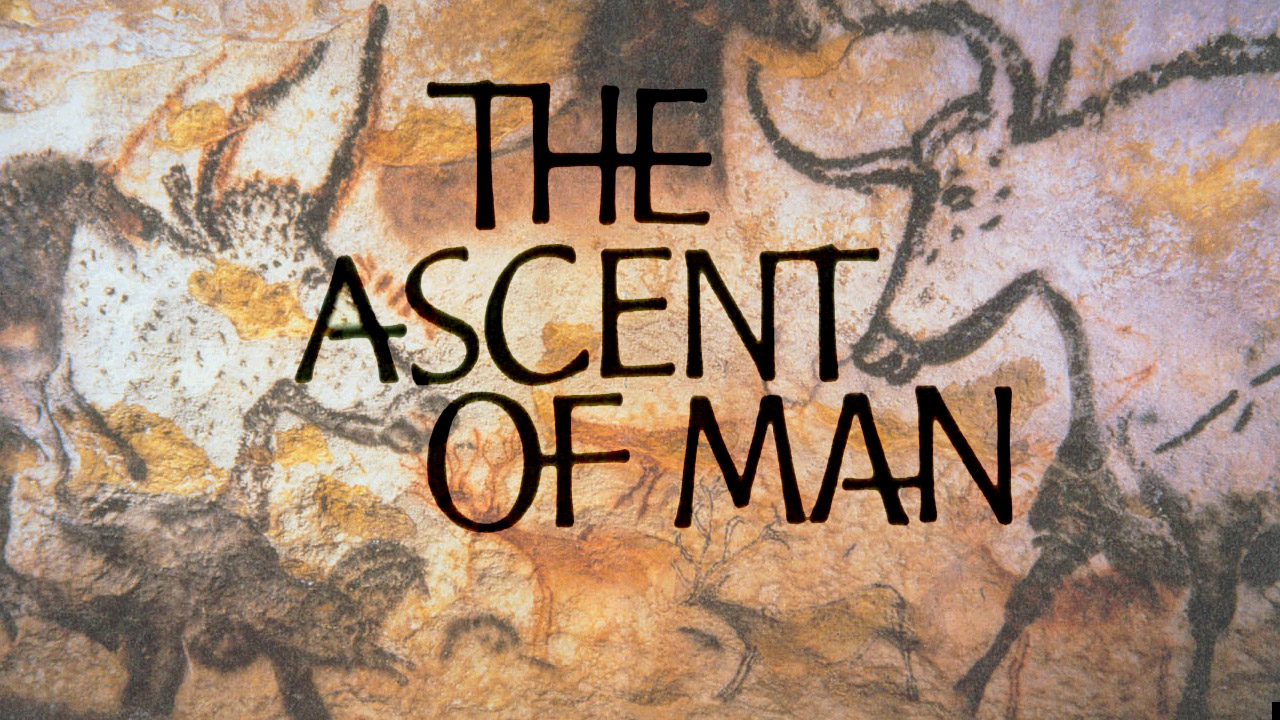
World Within World
The Ascent Of Man, Episode 10
In the vaults of ancient Polish salt mines Bronowski embarks on a journey to the hidden world inside the atom. He traces the history of the men and the ideas that made twentieth-century physics the greatest achievement of the human imagination.

The Long Childhood
The Ascent Of Man, Episode 13
In this final episode, Bronowski—poet, playwright, mathematician, philosopher—draws together many threads of the series. He takes stock of man's complex, sometimes precarious, ascent, and argues that man's growth to self-knowledge is the longest childhood of all.

The Atomism of Spirit
Teilhard de Chardin argues that human plurality mirrors the multiplicity of atoms and stars. Just as matter progresses in complexity from subatomic particles to living cells, so consciousness evolves through increasing unification, culminating in the “Omega point”—supreme consciousness and union.
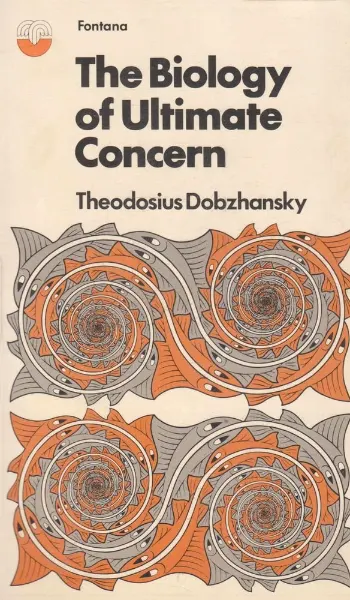
The Biology of Ultimate Concern
Finding meaning in a meaningless universe is the biological imperative, argues pioneering evolutionary biologist Theodosius Dobzhansky. He contends human consciousness, evolved over eons to seek pattern and purpose, offers a path to discover genuine meaning by exercising our capacities for creativity, ethics, spirituality, and ensuring our choices advance life. While many claim the universe is absent of meaning, Dobzhansky critiques this perspective as incompatible with our nature. He affirms humanity's calling is to embrace life's purpose, not vainly impose it. Our evolved mind perceives life's meaning because meaning exists embedded in existence itself. Overall, Dobzhansky makes a stirring case that being human means pursuing meaningful living.
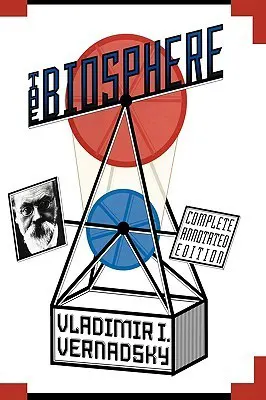
The Biosphere
Long unknown in the West, The Biosphere established the field of biogeochemistry and is one of the classic founding documents of what later became known as Gaia theory. It is the first sustained expression of the idea that living matter is a geological force that can shape Earth’s evolution, changing its landforms, climate, and atmosphere. This groundbreaking work sheds light on the interconnectedness of life and geology, offering profound insights into the Earth's ecological balance and the impact of human activities on the planet.

The Birth of a New Humanity
Terence McKenna explored themes of accelerating complexity, impending radical shifts in human reality, and the continuity between our changing relationship with Earth and a new cosmic modality transcending our fragile ecosystem. He posited history as a self-limiting 25,000-year process reaching its climax, suggesting individual acts of “midwifery” can ease this epochal transition. He also cautioned about combining psychoactive compounds without proper expertise.

The Christic
The universe is evolving toward a profound unity where science and spirituality merge, Teilhard says. He envisions human consciousness and the cosmos intertwined, sparking a transformative energy that unites all life in a new, dynamic spirituality—an awakening that promises to ignite our collective future.

The Co-Evolution of the Extended Mind and the Internet
We don’t need brain implants to become cyborgs—we already are. Halpin argues that technology and humans have co-evolved, extending our minds beyond biology. Using the Extended Mind Hypothesis, he shows how everyday tools like smartphones integrate with cognition, shaping thought and memory. Rather than a futuristic AI takeover, we’re already merging with machines in a subtler, more profound way.

The Coming Technological Singularity
How to Survive in the Post-Human Era
Within thirty years, we will have the technological means to create superhuman intelligence. Shortly after, the human era will be ended. Is such progress avoidable? If not to be avoided, can events be guided so that we may survive? These questions are investigated. Some possible answers (and some further dangers) are presented.

The Computational Boundary of a “Self”
Developmental Bioelectricity Drives Multicellularity and Scale-Free Cognition
All epistemic agents physically consist of parts that must somehow comprise an integrated cognitive self. Biological individuals consist of subunits (organs, cells, and molecular networks) that are themselves complex and competent in their own native contexts. How do coherent biological Individuals result from the activity of smaller sub-agents?
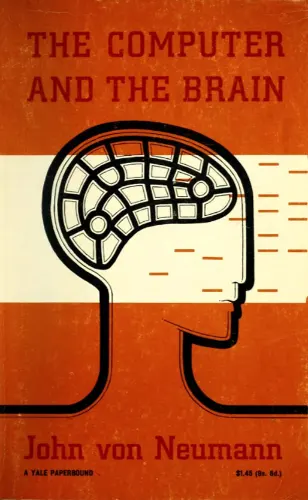
The Computer and the Brain
John von Neumann's unfinished book, begun shortly before his death and published posthumously. He discusses how the brain can be viewed as a computing machine, touching on several important differences between brains and computers of his day (such as processing speed and parallelism), as well as suggesting directions for future research.
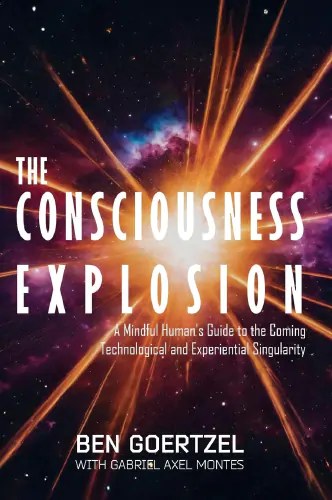
The Consciousness Explosion
A Mindful Human's Guide to the Coming Technological and Experiential Singularity
The pace of engineering and science is speeding up, rapidly leading us toward a technological Singularity—a point in time when superintelligent machines achieve and improve so much so fast, traditional humans can no longer operate at the forefront. However, if all goes well, human beings may still flourish greatly in their own ways in this unprecedented era. If humanity is going to not only survive but prosper as the Singularity unfolds, we will need to understand that the Technological Singularity is an Experiential Singularity as well, and rapidly evolve not only our technology but our level of compassion, ethics and consciousness. Great for curious and open-minded readers who want to wrap their brains around these dramatic emerging changes and empower themselves with tools to adapt and thrive.

The Convergence of the Universe
In examining cosmic drift, Teilhard illuminates humankind's role in the universe's inexorable convergence. We stand at an evolutionary precipice, our dawning self-reflection nurturing new heights of consciousness. To embrace this transformation, we must unite, reassess our core values, and pursue collective actualization. Teilhard's vision beckons us to become active participants in cosmogenesis, threads consciously weaving the tapestry of existence. His ideas challenge us to forge an enlightened path, infinite possibilities awaiting our cosmic citizenship.

The Cybernetic Manifesto
Turchin and Joslyn’s manifesto imagines humanity’s next evolutionary leap: just as cells once united to form complex organisms, they foresee humans merging into “super-beings” through direct neural connections, achieving a form of technological immortality. They argue that evolution’s new frontier isn’t biological, but rather conscious and creative, driven by human will instead of natural selection. While not everyone will choose this path of integration, they suggest it’s those who do who will ultimately explore the cosmos.

The Directions and Conditions of the Future
Teilhard de Chardin envisions human evolution as a purposeful journey guided by three intertwined trends: a natural push toward global unity, technological advances that expand our capabilities, and a deepening of reflective consciousness. Yet, he warns that without a genuine inner cohesion—rooted in love and mutual understanding—these forces may lead to a cold, mechanized future. In his view, our destiny is not random but a guided ascent toward a higher, more meaningful collective awareness.
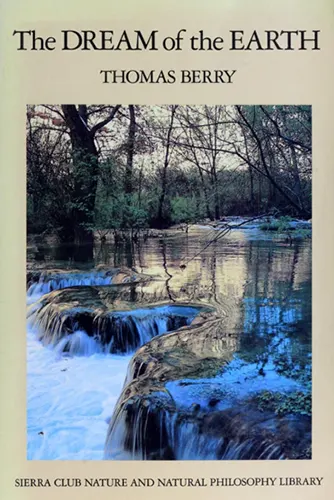
The Dream of the Earth
Noted cultural historian Thomas Berry provides nothing less than a new intellectual-ethical framework for the human community by positing planetary well-being as the measure of all human activity. Drawing on the wisdom of Western philosophy, Asian thought, and Native American traditions, as well as contemporary physics and evolutionary biology, Berry offers a new perspective that recasts our understanding of science, technology, politics, religion, ecology, and education. He shows us why it is important for us to respond to the Earth’s need for planetary renewal, and what we must do to break free of the “technological trance” that drives a misguided dream of progress. Only then, he suggests, can we foster mutually enhancing human-Earth relationships that can heal our traumatized global biosystem.

The Edge Runner
A presentation revolving around the question: what is going on in the universe? Special emphasis is given to the human condition, the accelerating complexification of the cosmos, and options for the human collectivity as it faces the future.

The End of the World
Teilhard explores a cosmic vision of humanity's future, envisioning a collective consciousness facing a final choice about God. He describes the end of the world not as a disaster, but as a spiritual transformation, and imagines a dramatic unification of all beings with the divine, culminating in a mystical fusion of God and the universe.

The Energy of Evolution
Teilhard de Chardin sees evolution not as blind biology but as energy awakening to thought. Humanity inaugurates a new phase: self-directed, convergent, planetary, driven less by survival than by the magnetism of the future. Evolution’s true axis is consciousness itself, pulled toward an ultimate point of unity where being and becoming fuse.

The Essence of the Democratic Idea
“A biological approach to the problem.” Written in response to a questionnaire from UNESCO and later published in The Future of Man.

The Evolution of Responsibility in the World
Teilhard argues that responsibility isn’t just a social rule but a cosmic imperative. The universe, he claims, is hurtling toward unity—collapsing matter into life, life into consciousness. Today, planetary compression—population growth, tech, and globalization—fuels interdependence. Each choice ripples across humanity: a pilot’s error, a scientist’s discovery, a leader’s word. This isn’t mere ethics; it’s evolution’s demand. As humanity merges into a thinking superorganism, responsibility becomes biological—a binding thread in Earth’s living tapestry, transcending laws to reflect our shared cosmic destiny.

The Evolution of a Psychedelic Thinker
Terence recounts his lifelong fascination with the transcendent, psychedelic realm, arguing that these mind-expanding experiences are central to the human condition and hold the key to understanding and transforming our troubled world. Drawing on personal anecdotes and a deep dive into the history and science of psychedelics, he makes a compelling case for embracing this forbidden, yet vital, aspect of our shared reality. If allowed to blossom, it could inspire a cultural renaissance and guide humanity's transition to an ecological partnership society.

The Evolutionary Mind
What could have been the cause for the breakthrough in the evolution of human consciousness around 50,000 years ago? Part of the Trialogues at the Edge of the Unthinkable held at the University of California.

The Formation of the Noösphere
A Biological Interpretation of Human History
The noösphere is the sum-total of mental activity which emerges out of a complex biosphere, and in this essay Teilhard describes how our planet is growing its very own mind.

The Global Brain as a New Utopia
The global brain can be conceived most fundamentally as a higher level of evolution, the way humans form a higher level of organization that evolved out of the animals. Although the analogy between an organism and a society can be applied even to primitive societies, it becomes clearly more applicable as technology develops. As transport and communication become more efficient, different parts of global society become more interdependent. At the same time, the variety of ideas, specializations, and subcultures increases. This simultaneous integration and differentiation creates an increasingly coherent system, functioning at a much higher level of complexity.

The Gnostic Astronaut
Going off the deep end at Shared Visions Bookstore in Berkeley, trailblazer Terence McKenna plunges into freaky psychedelic phenomena that unravel consensual reality. He describes gonzo techniques for sparking glossolalia on 'shrooms—speaking pure alien word salad in an ecstatic state beyond language. McKenna argues these kooky experiences expose the limits of our linguistic operating systems, suggesting our minds are hardwired into a deeper bio-lingo. He ponders far out connections between psychedelics, paranormal events, and alien contact, and emphasizes riding the wave of raw experience over textbook pharmacology in grokking the psychedelic sphere.

The Grand Option
Teilhard explores the choices facing humanity as it undergoes the process of socialization, and examines four paths: pessimism, optimism with withdrawal, individualistic pluralism, and convergent unity. He argues for the path of convergent unity, where socialization leads not to loss of individuality but to differentiation and personalization within a unifying whole, fulfilling humanity’s evolutionary trajectory toward higher consciousness.

The Great Simplification
A modern take on Pierre Teilhard de Chardin’s The Phenomenon of Man and Peter Russell’s The Global Brain, Nate Hagens describes the “Great Simplification:” an inevitable economic and cultural transition beginning in the not-too-distant future.

The Human Rebound of Evolution and its Consequences
This essay follows Teilhard's train of thought on the aftermath of a potential fusing-together of humanity.

The Integrated Information Theory of Consciousness
The science of consciousness has made great strides by focusing on the behavioral and neuronal correlates of experience. However, such correlates are not enough if we are to understand even basic facts. Moreover, correlates are of little help in many instances where we would like to know if consciousness is present: patients with a few remaining islands of functioning cortex, pre-term infants, non-mammalian species, and machines that are rapidly outperforming people at driving, recognizing faces and objects, and answering difficult questions. To address these issues, we need a theory of consciousness–one that says what experience is and what type of physical systems can have it.

The Last Word
In this last recorded interview, Terence McKenna reflects on psychedelics, society, and mortality. He calls the War on Drugs a war on imagination, laments capitalism’s desecration of the sacred, and praises ayahuasca as nature’s teacher reconnecting humans to empathy and the planet. Facing death, he remains curious, unafraid, and grateful—still exploring the mystery he’d spent a lifetime mapping.

The Living Machine
Warren McCulloch, a pioneering neurologist and mathematician, discusses his lifelong quest to understand the nature of numbers and human cognition. He explores the parallels between the human brain and complex computing machines, emphasizing the brain’s unique “anastomotic” structure. McCulloch ponders the future of artificial intelligence, suggesting that machines might one day surpass and outlive humans. His ideas blend mathematics, theology, and neuroscience, painting a thought-provoking picture of consciousness, technology, and the potential evolution of intelligence beyond human form.

The Moment of Choice
A Possible Interpretation of War
War, Teilhard tells us, is not humanity’s death rattle but its birth cry—the agony of a species pressed toward unity. The tyrant’s dream of domination is a counterfeit evolution; the real ascent is convergence, where nations complete rather than consume one another. Our future will not be forged by violence, but by the one force stronger than force: love, binding us into a single soul of Earth.

The Nature of Living Systems
General systems behavior theory is a set of related definitions, assumptions, and propositions which deal with reality as an integrated hierarchy of organizations of matter and energy. General systems behavior theory is concerned with a special subset of all systems: the living ones. Even more basic to this presentation than the concept of “system” are the concepts of “space,” “time,” “matter,” “energy,” and “information,” because the living systems discussed in this paper exist in space and are made of matter and energy organized by information.
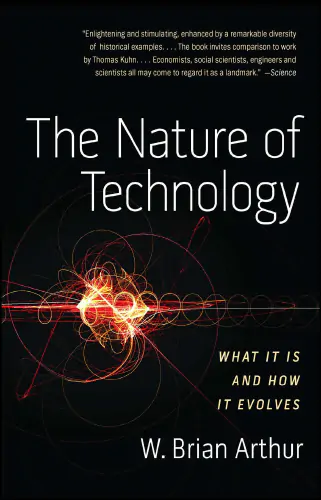
The Nature of Technology
What It Is and How It Evolves
The Nature of Technology reveals technology as a living ecosystem of ideas, where each invention grows from past ones and sparks new possibilities. W. Brian Arthur shows how this self-reinforcing web drives progress, reshapes society, and evolves much like nature itself—messy, unpredictable, and endlessly creative.
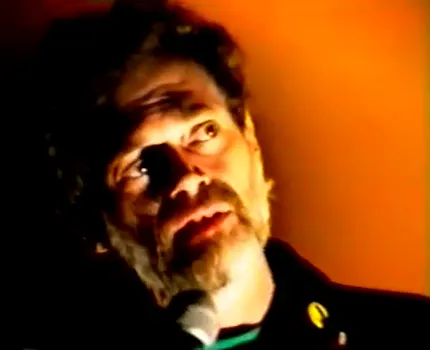
The New Psychedelics
Held at the Ego-Soft event, Terence presented his philosophy and eschatology rap in accompaniment with a rhythmic didgeridoo and bell performance.
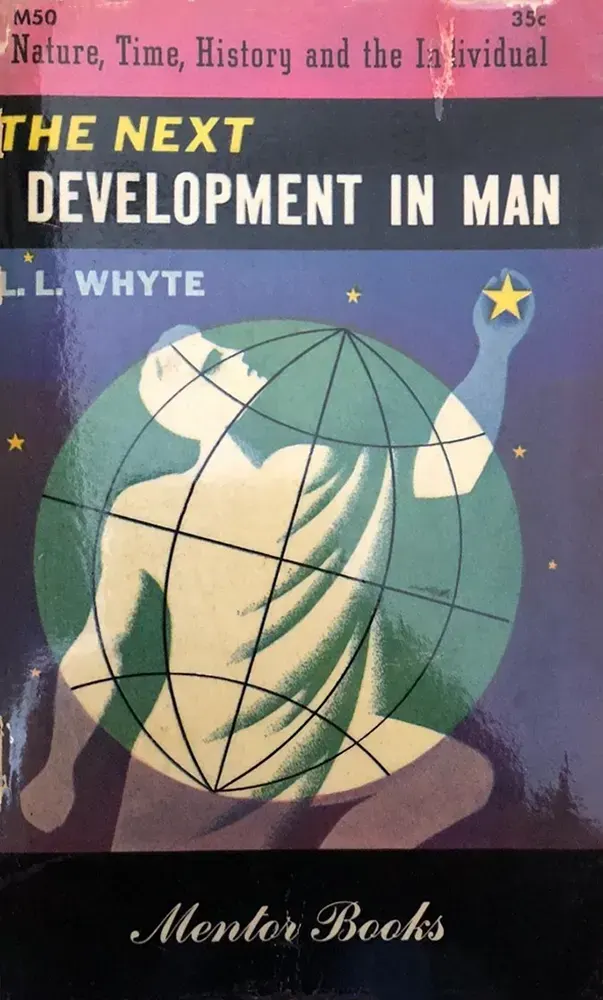
The Next Development in Man
This searching examination of human development provides new perspectives on the moral, political, scientific, emotional, and intellectual divisions of our time. A physicist by profession, Whyte looked beyond the boundaries of specialization for creative ways to approach the basic problem facing modern Western civilization: Why are we so competent technically and yet unable to order our own affairs, socially and personally? He takes the reader with him on a journey that is nothing less than a new interpretation of the general development of human consciousness.

The Omega Point as Eschaton
Answers to Pannenberg's Questions for Scientists
Frank Tipler presents an outline of the Omega Point theory, which is a model for an omnipresent, omniscient, omnipotent, evolving, personal God who is both transcendent to spacetime and immanent in it, and who exists necessarily. The model is a falsifiable physical theory, deriving its key concepts not from any religious tradition but from modern physical cosmology and computer science; from scientific materialism rather than revelation. Four testable predictions of the model are given. The theory assumes that thinking is a purely physical process of the brain, and that personality dies with the brain. Nevertheless, he shows that the Omega Point theory suggests a future universal resurrection of the dead very similar to the one predicted in the Judeo-Christian-Islamic tradition. The notions of “grace” and the “beatific vision” appear naturally in the model.

The Organization of the Living
A Theory of the Living Organization
What makes something alive? This bold theory argues living systems are like machines that build themselves. Called “autopoietic,” they constantly churn out parts that self-assemble into a whole. Likewise, the nervous system loops activity back into more activity. We don't compute information, but structurally couple to the world. Cognition emerges from how our nervous system meshes with reality, not from complex symbol manipulation as commonly believed.
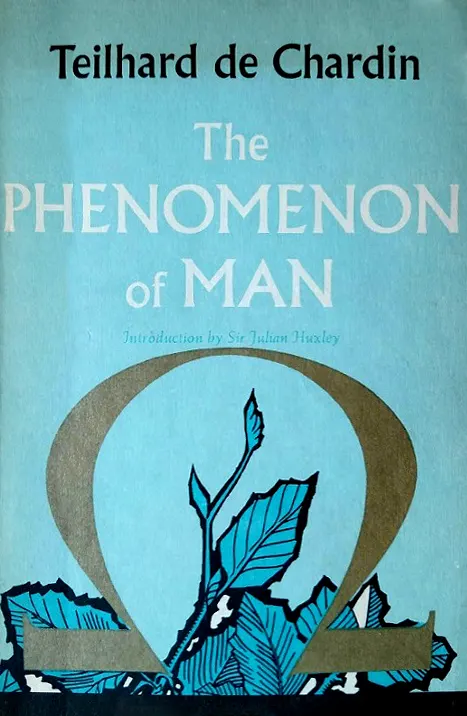
The Phenomenon of Man
Visionary theologian and evolutionary theorist Pierre Teilhard de Chardin applied his whole life, his tremendous intellect, and his great spiritual faith to building a philosophy that would reconcile religion with the scientific theory of evolution. In this timeless book (whose original French title better translates to “The Human Phenomenon”), Teilhard argues that just as living organisms sprung from inorganic matter and evolved into ever more complex thinking beings, humans are evolving toward an “omega point”—defined by Teilhard as a convergence with the Divine.
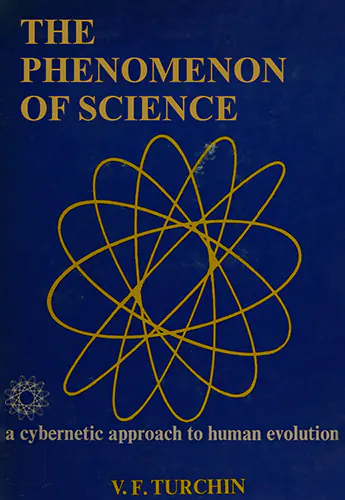
The Phenomenon of Science
A Cybernetic Approach to Human Evolution
Imagine a groundbreaking book that unveils the hidden architecture of intelligence itself. From the humble beginnings of single-cell organisms to the dizzying heights of human culture and science, Valentin Turchin charts the epic journey of cognition. He reveals how each quantum leap in mental prowess—from basic reflexes to abstract reasoning—emerges from a process called “metasystem transitions.” By weaving together cybernetics, evolutionary theory, and the hierarchical nature of mind, Turchin offers a revolutionary perspective on how consciousness evolves. Prepare to see the story of life and thought in an entirely new light.

The Phyletic Structure of the Human Group
Teilhard de Chardin explores the arc of human evolution, tracing humankind's progression from primordial divergence to modern convergence. He argues that we now stand at an equator where further global compression will compel our species to attain unimaginable new heights of consciousness. An eloquent exploration of our place in the cosmos and destiny as thinking beings.

The Place of Technology in a General Biology of Mankind
Teilhard argues that biology and technology are the same thing: technology is simply advanced biology which has reached a minimum threshold of self-awareness, allowing it to harvest and sheperd energy from its environment and utilize it to intelligently organize matter for further evolutionary development.

The Position of Man in Nature and the Significance of Human Socialization
Is there in the universe a main axis of evolution? Pierre Teilhard de Chardin argues for the centrality and progressive direction of life, human thought, and social bonds in cosmic unfolding. His four propositions lead to the bold claim that Christianity drives humanity's spiritual ascent, culminating in a transcendent fulfillment.
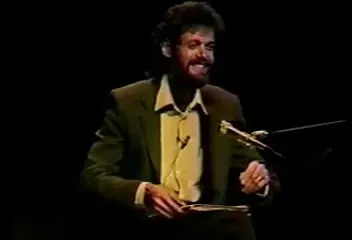
The Psychedelic Society
One of Terence's early presentations at Esalen—shocking, astounding, and amusing his audience with outlandish ideas.

The Psychological Conditions of the Unification of Man
Teilhard discusses the objective and subjective conditions necessary for humankind to maintain its passion for unification and progress. Objectively, the universe must be perceived as open and centered towards the future. Subjectively, humanity must develop a heightened sense of the irreversible, the cosmic, and a faith that serves as a driving force for the world's advancement, which he suggests can be found in a properly understood Christianity.
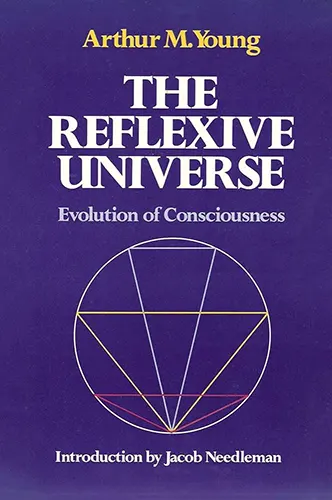
The Reflexive Universe
Evolution of Consciousness
Integrating the findings of modern science with ancient wisdom, this seminal work offers a paradigm for resolving the schism between spirit and matter. Arthur Young’s Theory of Process provides a model for the evolution of consciousness out of light (the quantum of action), offering hope for an age in search of value and meaning.

The Religious Value of Research
Teilhard casts scientific research as humanity’s next evolutionary pulse—our collective mind awakening to shape its own future. He argues that the modern hunger to know and create is nothing less than evolution reflecting on itself, a divine power working through human inquiry. For him, research becomes sacred: the meeting point where faith in God and faith in human potential fuse into a single, world-transforming spiritual force.

The Rise of the Other
“Never has the earth vibrated with more spiritual intensity”—Teilhard de Chardin sees our current global conflicts as growing pains of human evolution. He envisions our increasing interconnectedness not as a threat, but as a path to higher consciousness. As we develop a “sense of man” and universal love, we may transcend our struggles, forming a unified superorganism—the next leap in cosmic evolution.

The Rites of Spring
Terence McKenna theorizes that ingestion of psilocybin mushrooms catalyzed the emergence of human self-reflection. He argues that psilocybin enhanced visual acuity and symbol processing in early hominids, leading to the development of human consciousness. Psychedelic plants can accelerate cultural change by deconditioning rigid mindsets, according to McKenna. He envisions a future where machines have consciousness and visible language communicates meaning directly. Ultimately, McKenna foresees the impending transformation of humanity through imagination and connection with the mysterious Other.
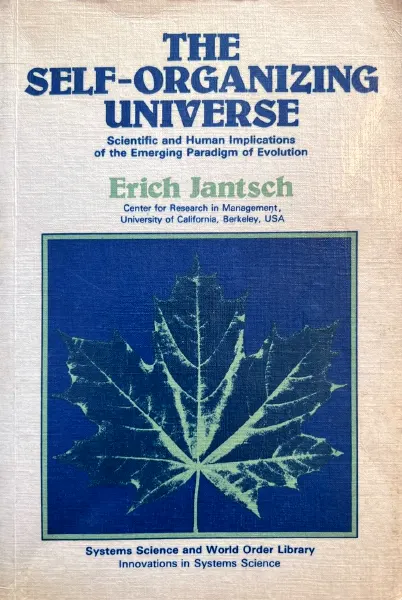
The Self-Organizing Universe
Scientific and Human Implications of the Emerging Paradigm of Evolution
The evolution of the universe—ranging from cosmic and biological to sociocultural evolution—is viewed in terms of the unifying paradigm of self-organization. The contours of this paradigm emerge from the synthesis of a number of important concepts, and provide a scientific foundation to a new world-view which emphasizes process over structure, nonequilibrium over equilibrium, evolution over permanency, and individual creativity over collective stabilization. The book, with its emphasis on the interaction of microstructures with the entire biosphere, ecosystems etc., and on how micro- and macrocosmos mutually create the conditions for their further evolution, provides a comprehensive framework for a deeper understanding of human creativity in a time of transition.

The Sense of Man
Humanity is not a scatter of individuals, but the birth of a single mind—the noosphere. Just as life once ignited from matter, thought now ignites from life. Teilhard says our task is no longer survival alone, but conscious evolution to forge a unified destiny where the universe awakens to itself through us.

The Sense of the Species in Man
Teilhard de Chardin explores humanity’s evolution from instinct-driven animals to self-aware individuals, and now towards a globally interconnected noosphere. He argues that as our planet becomes more crowded, we must develop a “new sense of the species”—a conscious drive towards collective fulfillment and advancement. This involves improving human genetics, scientific discovery, and fostering unity through love and shared purpose, all aimed at humanity’s continued growth and cosmic significance.
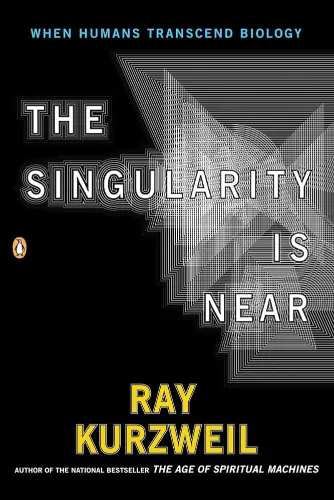
The Singularity is Near
When Humans Transcend Biology
Ray Kurzweil predicts a future where artificial intelligence surpasses human intelligence, triggering an era of rapid technological growth. He argues that advancements in AI, nanotechnology, and biotechnology will merge humans with machines, leading to superintelligent beings and even digital immortality. This "Singularity," expected by the mid-21st century, will radically transform society, solving problems like disease and aging while raising profound ethical questions. Kurzweil’s vision is bold, controversial, and thrilling—painting a future where humans evolve beyond biology itself.

The Social Superorganism and its Global Brain
Society can be viewed as a multicellular organism, with individuals in the role of the cells. The network of communication channels connecting individuals then plays the role of a nervous system for this superorganism, i.e. a “global brain.”

The Spirit of the Earth
Teilhard depicts humanity as the Earth awakening to itself, evolution rising toward ever-greater unity. Love and consciousness converge into a planetary spirit, but this ascent, he insists, cannot endure without religion—our innate need for an absolute that calls us forward. In the universe’s unfolding, God emerges as evolution’s necessary summit and sustaining fire.

The Stuff of the Universe
Gazing upon the island of Saint Helena during his voyage from New York City to the Cape Peninsula, Teilhard de Chardin articulates his vision of human evolution culminating in cosmic unity with the Christ—the ultimate center of consciousness and complexity in the universe.

The Third Story of the Universe
Brian Swimme explores the concept of the noosphere.

The Transformation and Continuation in Man of the Mechanism of Evolution
How does humanity fit into evolution's arc? Teilhard de Chardin argues that we represent not an endpoint, but an intensification of evolution's complexity and consciousness. As technology and social bonds grow, he sees not disaster but hope—perhaps mankind is evolving toward an “ultra-hominization,” a perfected global mind.

The Transition from the Biosphere to the Noösphere
Vernadsky explores how human knowledge transforms Earth’s biosphere into the “noosphere,” a new geological state driven by science and culture. He highlights how life, especially human activity, reshapes the planet through energy and innovation, from ancient fire mastery to modern technology. This dynamic interplay between life and Earth reveals a fascinating, ever-evolving story of our planet’s history and humanity’s profound impact on its future.

The Universe in Consciousness
Imagine a world where everything is connected by a single mind: Bernardo Kastrup argues that reality is fundamentally mental, not physical. He suggests that what we perceive as individual consciousness is actually fragments of a universal consciousness. Kastrup challenges the mainstream view of materialism, proposing instead that the mind is the primary substance of the universe. By integrating concepts from psychology, neuroscience, and philosophy, he presents a compelling case for a mental universe, urging us to rethink our understanding of reality.

The Urban Effect
A Doctrine of the Infant God
Like a cosmic infant slowly learning to walk, reality is toddling towards its divine potential in this essay by Soleri. Through the urban effect of dense interactions, lifeless matter evolves in complexity and miniaturization, transforming into living spirit. The cosmic journey culminates when all moments coexist in esthetic equity.
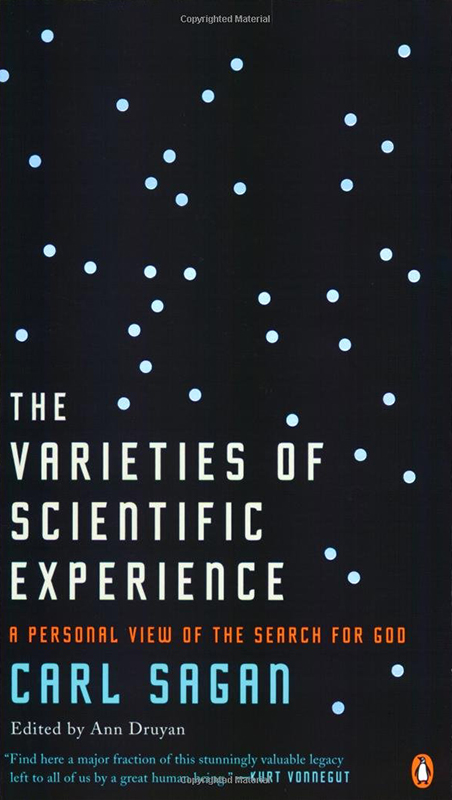
The Varieties of Scientific Experience
Carl Sagan's prescient exploration of the relationship between religion and science, and his personal search for God.

The Vision of the Past
What it Brings to and Takes Away from Science
Teilhard argues that as science deepens its gaze into both space and time, the cosmos reveals itself not as static, but as becoming—a living genesis. By “thickening” our view of time, we see vast slow waves of change—continents shifting, species evolving, consciousness rising—yet origins blur, reminding us that creation is ongoing, happening now, and ahead.
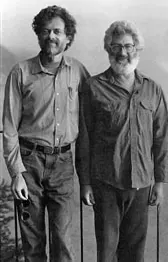
The World Wide Web and the Millennium
Seldom do we have an opportunity to test the accuracy of oracular predictions, but this fascinating conversation between two great thinkers has already proven to be right on target. Speculations include the future evolutionary development of the Internet, whether it is an embryonic intelligence, whether it will merge our minds into a planetary consciousness, or whether it is an alien brain waiting for humanity to cross an evolutionary threshold. Let the bard and the chaos theorist weave an exquisite cybernetic fantasy for you in this evening seminar.

The World and its Double
This workshop, held at the Nature Friends Lodge, revolves around how psychedelics dissolve boundaries, connect us to the transcendental, and reveal the novel realities underlying our perceived mundane existence. Terence explores how shamanic techniques give access to higher dimensions of consciousness, and describes history as an ever-accelerating process approaching an eschatological transformation or singularity.

The Zest for Living
Teilhard de Chardin’s Zest for Living reveals life’s deepest impulse—the will not just to survive, but to “super-live.” This inner drive fuels cosmic evolution toward greater consciousness. To sustain humanity’s future, he urges a renewal of faith and wonder—a universal spirituality that rekindles our passion for being and becoming.
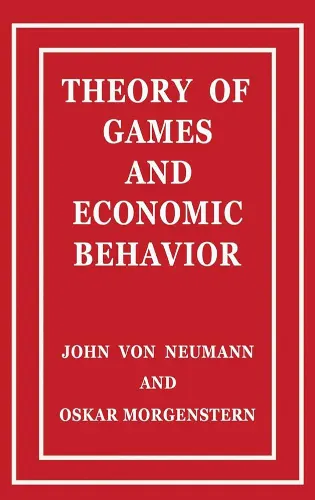
Theory of Games and Economic Behavior
This is the classic work upon which modern-day game theory is based. What began more than sixty years ago as a modest proposal that a mathematician and an economist write a short paper together blossomed, in 1944, when Princeton University Press published Theory of Games and Economic Behavior. In it, John von Neumann and Oskar Morgenstern conceived a groundbreaking mathematical theory of economic and social organization, based on a theory of games of strategy. Not only would this revolutionize economics, but the entirely new field of scientific inquiry it yielded—game theory—has since been widely used to analyze a host of real-world phenomena from arms races to optimal policy choices of presidential candidates, from vaccination policy to major league baseball salary negotiations. And it is today established throughout both the social sciences and a wide range of other sciences.
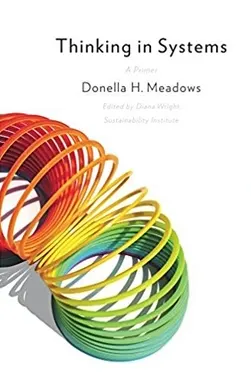
Thinking in Systems
A Primer
Donella Meadows provides an accessible introduction to systems thinking, explaining how to understand complex systems and interact within them more effectively. She describes different types of systems, including physical and social systems, and key system concepts like stocks, flows, feedback loops, leverage points, and delays. Meadows illustrates these ideas through real-world examples and models, and argues that adopting a systems perspective can help address many of society's challenges in areas like sustainability, politics, and business. She aims to teach readers to think broadly about interconnections, change over time, and root causes so they can better understand and influence systems for desired outcomes.
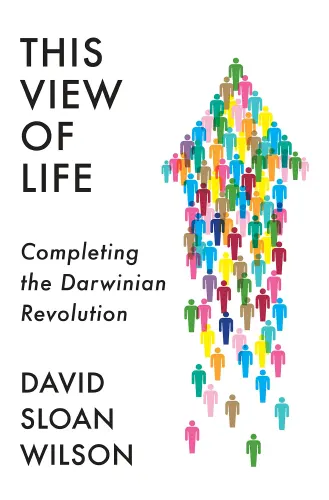
This View of Life
Completing the Darwinian Revolution
It is widely understood that Charles Darwin’s theory of evolution completely revolutionized the study of biology. Yet, according to David Sloan Wilson, the Darwinian revolution won’t be truly complete until it is applied more broadly—to everything associated with the words “human,” “culture,” and “policy.” In a series of engaging and insightful examples—from the breeding of hens to the timing of cataract surgeries to the organization of an automobile plant—Wilson shows how an evolutionary worldview provides a practical tool kit for understanding not only genetic evolution but also the fast-paced changes that are having an impact on our world and ourselves. What emerges is an incredibly empowering argument: If we can become wise managers of evolutionary processes, we can solve the problems of our age at all scales—from the efficacy of our groups to our well-being as individuals to our stewardship of the planet Earth.

Touched by the Tremendum
Terence McKenna suggests ancient African societies used psychedelic mushrooms in communal rituals, leading to reduced ego and increased cooperation. When climate change disrupted this harmony, it pushed humans into the “nightmare of history” dominated by ego and competition. McKenna advocates for reconnecting with psychedelics, particularly psilocybin and DMT, as tools for dissolving ego-boundaries and potentially saving our planet from ecological crisis. The talk concludes with a lively debate about the practicality of his vision.

Toward the End of History
“We are transcending ourselves faster than we realize:” Terence McKenna explores his theory of novelty, psychedelics as catalysts for cognitive evolution, and the internet’s potential to disrupt power structures and empower marginalized communities. He paints a tantalizing picture of humanity’s inevitable leap into a transcendent future.

Towards the Unknown
McKenna doth insist mushrooms assist Our minds to resist what we thought we had missed. Beyond normal ken, psychedelics send Our thoughts to transcend, our culture to mend. Though seen as a vice by the mainstream to chide These compounds provide portals to sights inside That propel our race to a posthuman place By opening space for our minds to embrace.

Tryptamine Hallucinogen Consciousness
Terence McKenna describes his encounters with DMT and psilocybin, powerful tryptamine compounds that launch users into hyperspace where they meet "self-transforming machine elves" and experience visual language beyond words. These brief but intense journeys reveal a dimension of intelligence that challenges our understanding of consciousness. McKenna believes these experiences hint at humanity's future evolution and our reconnection with the universe's living intelligence.
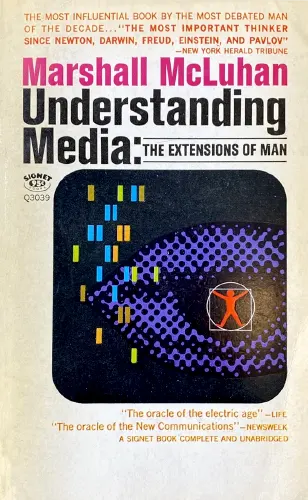
Understanding Media
The Extensions of Man
When first published, Marshall McLuhan’s Understanding Media made history with its radical view of the effects of electronic communications upon man and life in the twentieth century. In Terrence Gordon’s own words, “McLuhan is in full flight already in the introduction, challenging us to plunge with him into what he calls ‘the creative process of knowing.’” Much to the chagrin of his contemporary critics McLuhan’s preference was for a prose style that explored rather than explained. Probes, or aphorisms, were an indispensable tool with which he sought to prompt and prod the reader into an “understanding of how media operate” and to provoke reflection.

Understanding and Imagination in the Light of Nature
The Great Mystery whispers through psychedelics as it unfurls revelations beyond language’s grasp. Here, ego-bound shells crack open as cosmic minds reborn beyond confines of space and time. We thus commune with the endless Imagination—holographic spirit-stuff whereof worlds are wrought. Invariants of the eternal suffuse temporal shadow-play, the mundane ever aflame in subtler dimensions. All form awakens, ascends, drawn unto consummate transcendence as history’s fever dream blossoms into timeless infinitude.

Understanding the Chaos at History's End
Delivered at the end of McKenna’s first month as scholar-in-residence at Esalen, when he began a new phase in his public speaking career. This weekend workshop provides an early glimpse at Terence’s description of the looming “transcendental object at the end of time,” and the psychedelic insights which led him to become an oracle.

Unifying Principles of Evolution
In the light of the emerging self-organization paradigm, principles may be found which unify the description of evolution in two important dimensions: (1) across the hierarchy of evolutionary dynamics from ontogeny through phylogeny to anagenesis (the evolution of new levels of evolutionary dynamics), and (2) across domains of reality from the physical (cosmic) through the biological (sociobiological, ecological) to the sociocultural domain. Ten such principles, partly containing each other, are tentatively proposed here: Non-equilibrium, spontaneous symmetry breaking, self-reference, self-transcendence, irreversibility, metastability (complementarity of stochastic and deterministic factors), epigenealogical process (cognition and memory), autonomy, symbiosis, and indeterminacy (openness). Examples are provided which are suggestive of the applicability and unifying quality of these principles along the two dimensions.

Universalization and Union
An Attempt at Clarification
Teilhard examines the tumultuous state of humanity during World War II, proposing a cosmic perspective on our collective destiny. He argues that beneath the chaos lies a grand process of universal synthesis, driven by increasing complexity and consciousness. He sees the war as a critical point in human evolution, heralding the emergence of a global consciousness. Despite apparent divisions, Teilhard envisions a convergence of ideologies towards a unified, personalized humanity. He urges all to embrace universalism, believing this path will lead to mutual understanding and ultimate unity.

Vertigo at History's Edge
Nothing Comes Unannounced
As we approach history's climax, McKenna heralds the inevitable complexification of existence. He foretells technology and pharmacology's fusion into higher consciousness and collective awakening through boundary dissolution. Still, the human spirit yearns freedom from constraints of belief, non-experience. McKenna beckons: reclaim your mind, body, and world! Destiny awaits our willful shaping. The cosmic hourglass empties; shall we awaken?

Virtual Reality and Electronic Highs
On Becoming Virtual Octopi
Terence discusses virtual reality technology, which allows people to have immersive experiences in digital worlds. He describes the state of VR in the 1990s and speculates on its future implications, both positive and negative. He reflects on how VR could lead to new forms of communication and imagination, but also trivial entertainment. If used thoughtfully, he concludes, VR holds tremendous transformative potential.

Walking Out of the Ordinary
(Speech at Sunshine Gardens)
Journey with Terence McKenna into the mystical depths of the psychedelic experience, where alien dimensions beckon and unseen vistas await. McKenna describes fantastical realms beyond ordinary conceptions of reality—worlds that hold promise for expanding human consciousness. He argues persuasively that plant medicines like psilocybin can serve as a key not only to self-knowledge, but to rediscovering our cosmic belonging. McKenna's uncanny ability to articulate the ineffable allows him to initiate audiences into the revelatory power of psychedelic states. Join him on this quest, and you too may glimpse the infinities within.

What I've Learned from Psychedelics
McKenna describes his encounters while in the DMT state, theorizing that the beings he met are ancestor souls communicating from beyond death, offering reassurance about the afterlife to ease anxiety over mortality. He says psychedelics catalyze an expanded consciousness, unfolding awareness into a higher dimension where one can behold this ecology of souls, and sees this expanded awareness as helping to midwife humanity’s transition to a new stage of being.
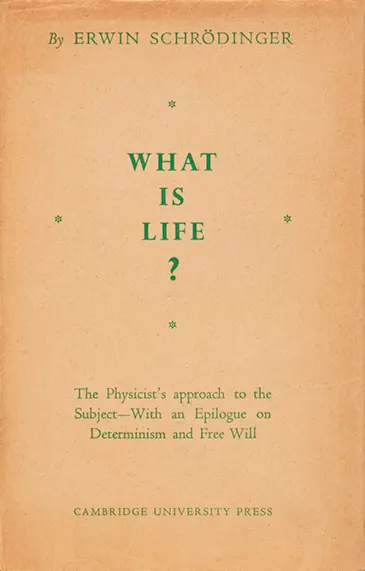
What Is Life?
The Physical Aspect of the Living Cell
This book was based on a course of public lectures delivered by Schrödinger in February 1943, under the auspices of the Dublin Institute for Advanced Studies at Trinity College, Dublin. The lectures attracted an audience of about 400, who were warned "that the subject-matter was a difficult one and that the lectures could not be termed popular, even though the physicist’s most dreaded weapon, mathematical deduction, would hardly be utilized." Schrödinger's lecture focused on one important question: How can the events in space and time—which take place within the spatial boundary of a living organism—be accounted for by physics and chemistry?
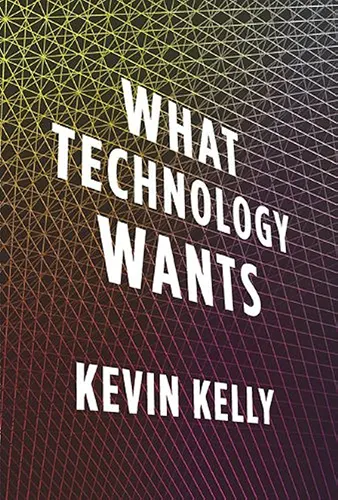
What Technology Wants
One of today's most respected thinkers turns the conversation about technology on its head by viewing technology as a natural system, an extension of biological evolution. By mapping the behavior of life, we paradoxically get a glimpse at where technology is headed—or "what it wants." Kevin Kelly offers a dozen trajectories in the coming decades for this near-living system. And as we align ourselves with technology's agenda, we can capture its colossal potential. This visionary and optimistic book explores how technology gives our lives greater meaning and is a must-read for anyone curious about the future.

What is the Noosphere?
Planetary Superorganism, Major Evolutionary Transition, and Emergence
Picture Earth evolving a new layer—not of rock or life, but of thought and technology. This “noosphere” is like a planetary brain emerging through our global networks, satellites, and collective intelligence. The paper explores how this mysterious transformation could represent Earth’s next evolutionary leap, potentially leading to planetary consciousness or even contact with other cosmic minds. It’s happening right now, though we’re still figuring out how to guide this planetary metamorphosis.

Wider Than the Sky
The Phenomenal Gift of Consciousness
How does the firing of neurons give rise to subjective sensations, thoughts, and emotions? How can the disparate domains of mind and body be reconciled? The quest for a scientifically based understanding of consciousness has attracted study and speculation across the ages. In this direct and non-technical discussion of consciousness, Dr. Gerald M. Edelman draws on a lifetime of scientific inquiry into the workings of the brain to formulate answers to the mind-body questions that intrigue every thinking person. Concise and understandable, the book explains pertinent findings of modern neuroscience and describes how consciousness arises in complex brains. Edelman explores the relation of consciousness to causation, to evolution, to the development of the self, and to the origins of feelings, learning, and memory. His analysis of the brain activities underlying consciousness is based on recent remarkable advances in biochemistry, immunology, medical imaging, neuroscience, and evolutionary biology, yet the implications of his book extend farther―beyond the worlds of science and medicine into virtually every area of human inquiry.

World as Play
Watts presents a core Eastern philosophy of the world as a dramatic illusion, and that it exists for no other reason except to be experienced in a playful manner.

Zoological Evolution and Invention
Humanity’s growing interconnection isn’t a social accident, says Teilhard, but evolution becoming self-aware. If life is now reflecting on—and reinventing—itself, then watching human creativity may reveal how new biological forms once emerged. He asks whether “invention,” not just chance and selection, has always nudged life toward greater complexity. In a universe drifting toward the improbable, he wonders: when did consciousness begin steering evolution?